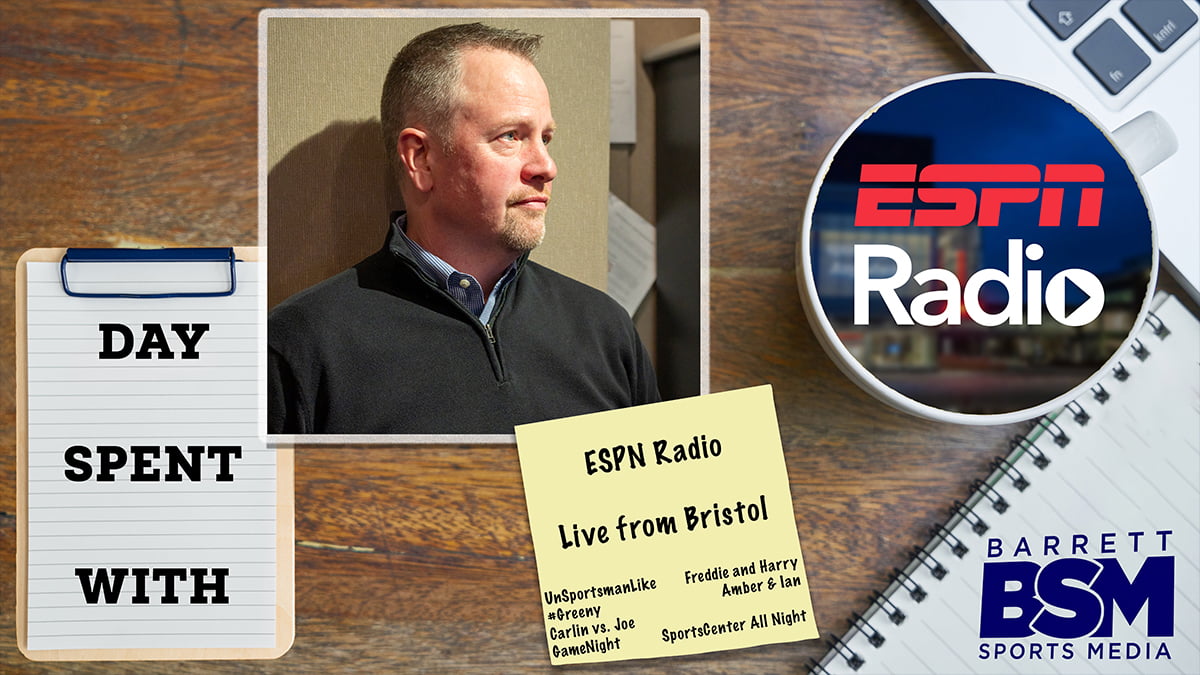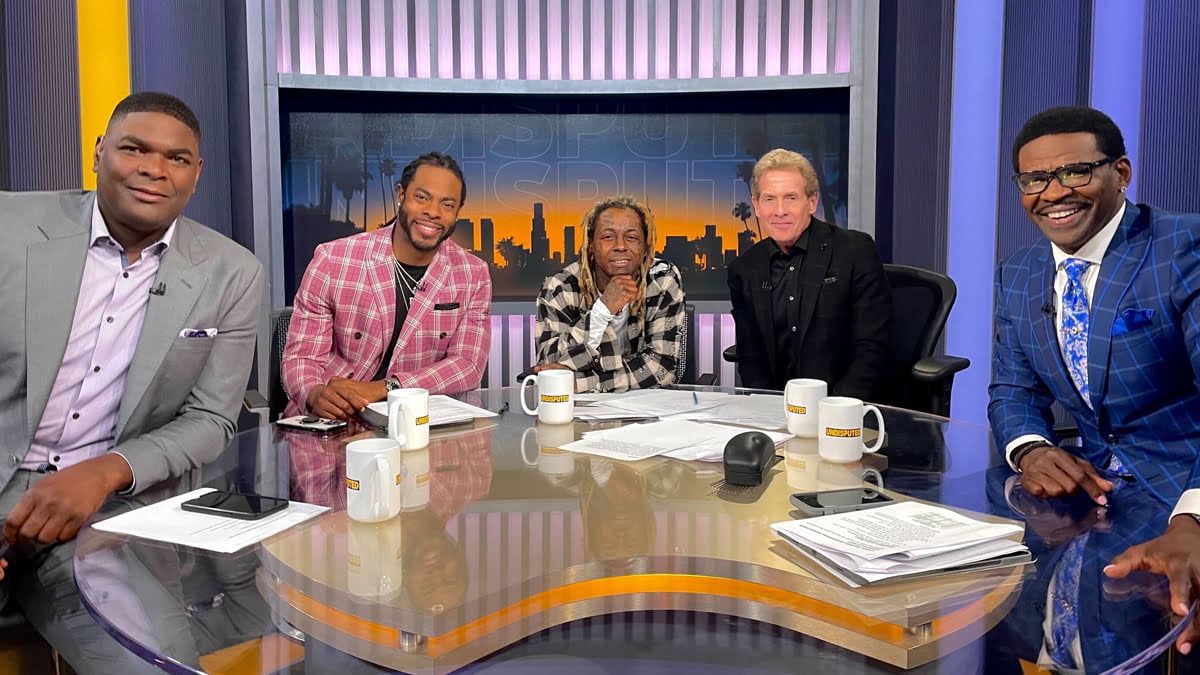For our fifth Day Spent With feature, we sent Derek Futterman to Bristol, CT to learn what goes into a full day of programming at the ESPN Radio network. My thanks to Justin Craig and the entire management and on-air teams for making him feel welcome and providing full access to everything he needed.
If there’s one thing I love about Mr. Craig, and he was like this as a producer, he is always well prepared. In arranging the schedule for Derek’s visit, his entire day from 8am-6pm was accounted for. From meeting with the shows to PR to zoom calls with ESPN NY/ESPN LA to individual manager meetings, if there were issues to explore and people to meet, they were on his schedule. That type of detail is what sets great programmers apart. It’s why JC is one of the best.
Still planned for this series are days spent with sports television shows, a market manager, a social media manager, and a media buyer. We also left room for one additional project should something interesting come up. If you or your brand wish to be involved and have an idea you want to pitch, please email JBarrett@sportsradiopd.com.
Now without further adieu, here’s Derek Futterman’s Day Spent With the ESPN Radio network.
– Jason Barrett
Some snow is still present on the ground at ESPN Headquarters in Bristol, CT, slowly melting away after a Nor’easter recently blanketed 13 inches worth of flurries above the town. Aside from a more strenuous commute though, this doesn’t slow down anyone on the 120-acre campus the network has called home since 1979. Beyond the entry gates are two adjacent digital centers, each containing colossal television and video production facilities with state-of-the-art technology. In the distance is the ESPN teleport farm that communicates with satellites to distribute programs to several million homes around the world. There are also plenty of network interfaces around the campus capable of disseminating audiovisual content via digital channels.
On this particular morning, two control rooms are filled with producers, directors and coordinators operating First Take on ESPN and the UnSportsmanLike simulcast from ESPN Radio on ESPN2. There are also researchers and loggers monitoring the news cycle and compiling information for use across network properties, always ready to react to breaking news or haste developments.
Up the stairs on the second floor are studios used for award-winning television broadcast institutions, including Sunday NFL Countdown, Outside the Lines and the network’s flagship program, SportsCenter. The original desk, chairs and backdrop are on display in the building next door, accessible by a skybridge spanning over a heated outdoor patio.
The journey towards the ESPN Radio studios continues through several hallways adorned with production facilities, offices and sports memorabilia. Those inside the building complex have transformed and innovated sports media as we know it, seeking to live up to its mission statement and providing value to consumers and partners. Turn a corner and down a long hallway displays a sign with the ESPN Radio logo, identifying the primary location of the division that was first established in 1992.
The radio section of the building contains several studios and control rooms, many featuring radio boards and remotely-operated cameras. There are microphones outfitted with the ESPN Radio mic flag, the heralded letters carrying ethos and prestige serving as a reminder of its sublime history and ongoing journey.
Outside of the studio where the network launched Mike & Mike is the office of Justin Craig, senior director of network talk and operations responsible for overseeing the ESPN Radio vertical. Although his days include several meetings and managerial tasks, he has not lost sight of the formatics and fundamentals of radio broadcasting and connecting with listeners.
“Every show that comes out has to hit our expectation to make sure we’re living up to the standard of what our audience is expecting,” Craig said. “There is an expectation that we’re providing them the information that they need with the personality they expect.”
Craig occupies an office previously used by Stephen A. Smith with a clear view of the fight song corridor dedicated to college football. On the top of a writable wall, he has enumerated ‘relevancy, relatability, ratings/revenue and relationships,’ adding them all together to reach a summation equivalent to ‘results.’ All of these factors ascribe the audience, which patronizes the programming and offers feedback in the form of compliments, criticisms and suggestions.
“You have to make sure that you’re focused on putting content out there that is smart, curious and focused on making a person that’s listening want to listen longer,” Craig said. “I’m going to get my impressions and my audience to stick if I’m interesting, curious and if they can learn something along the way.”
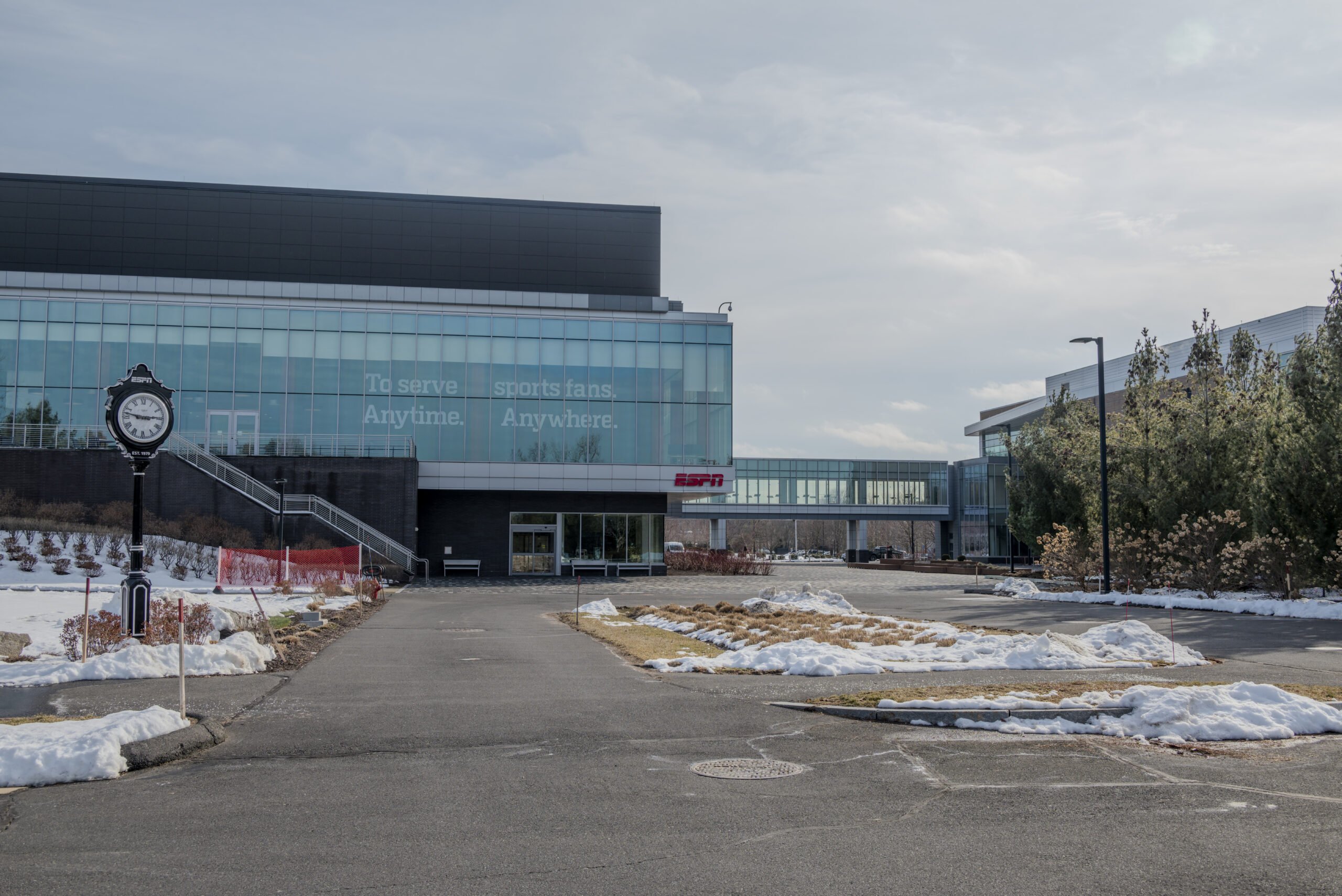
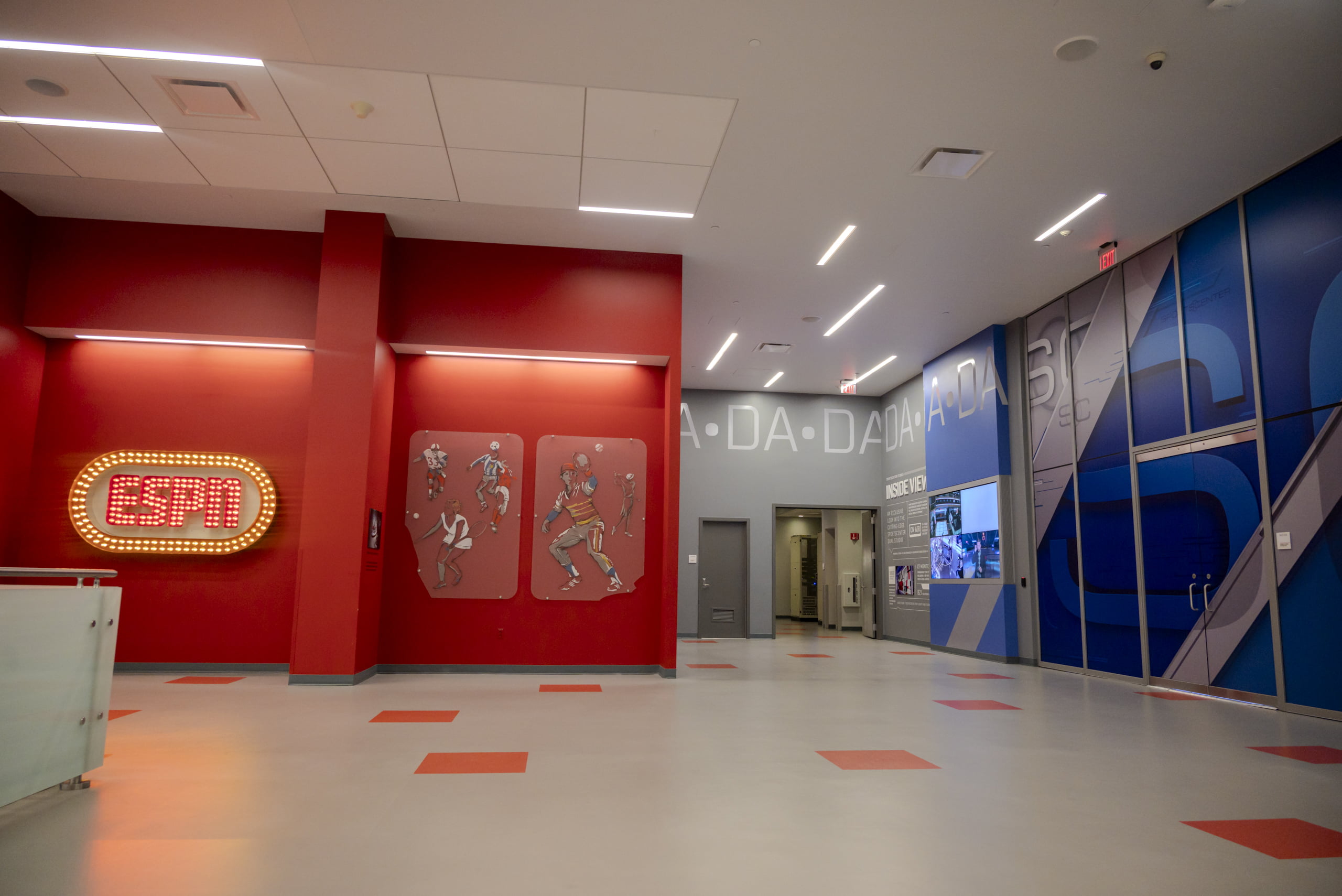
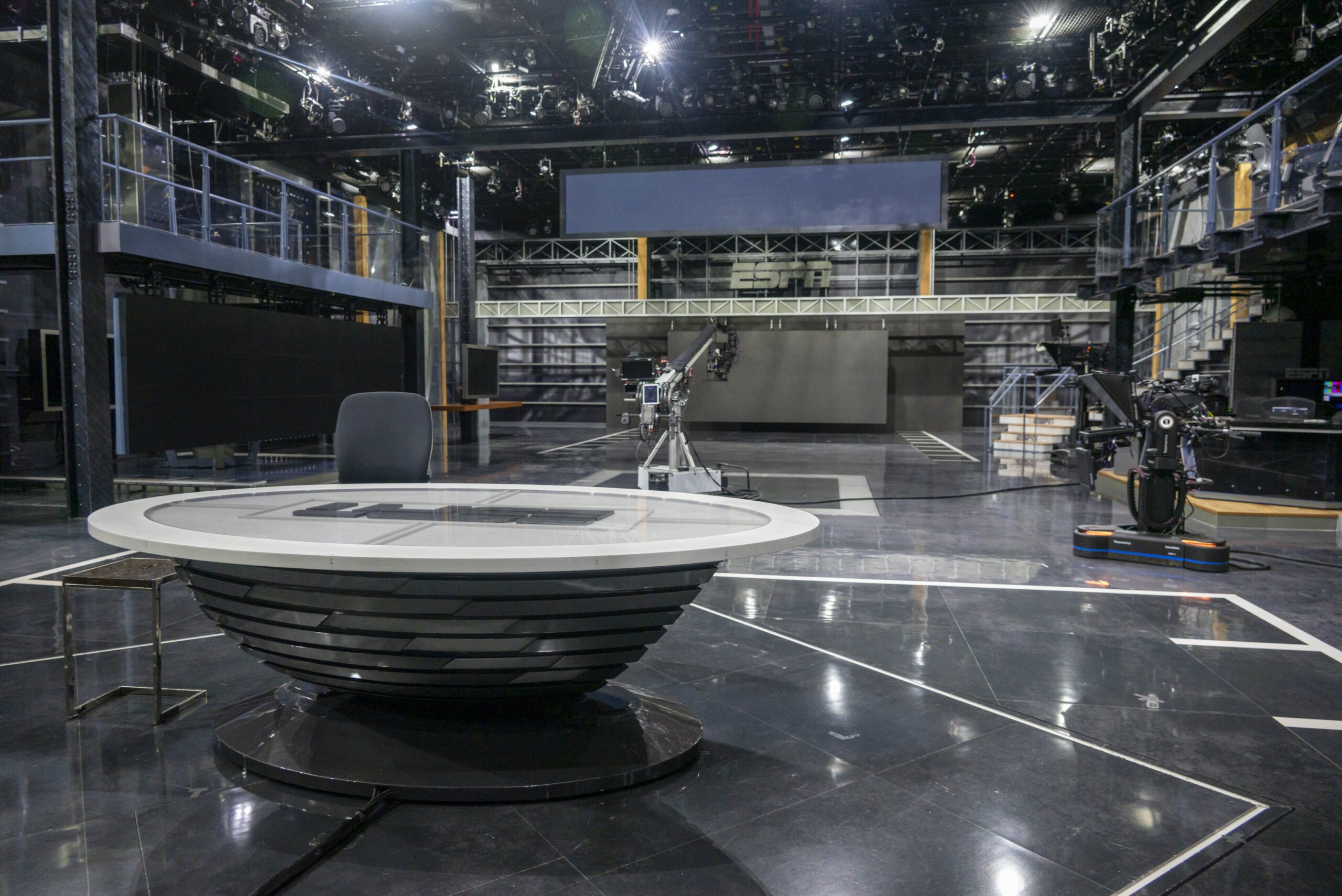

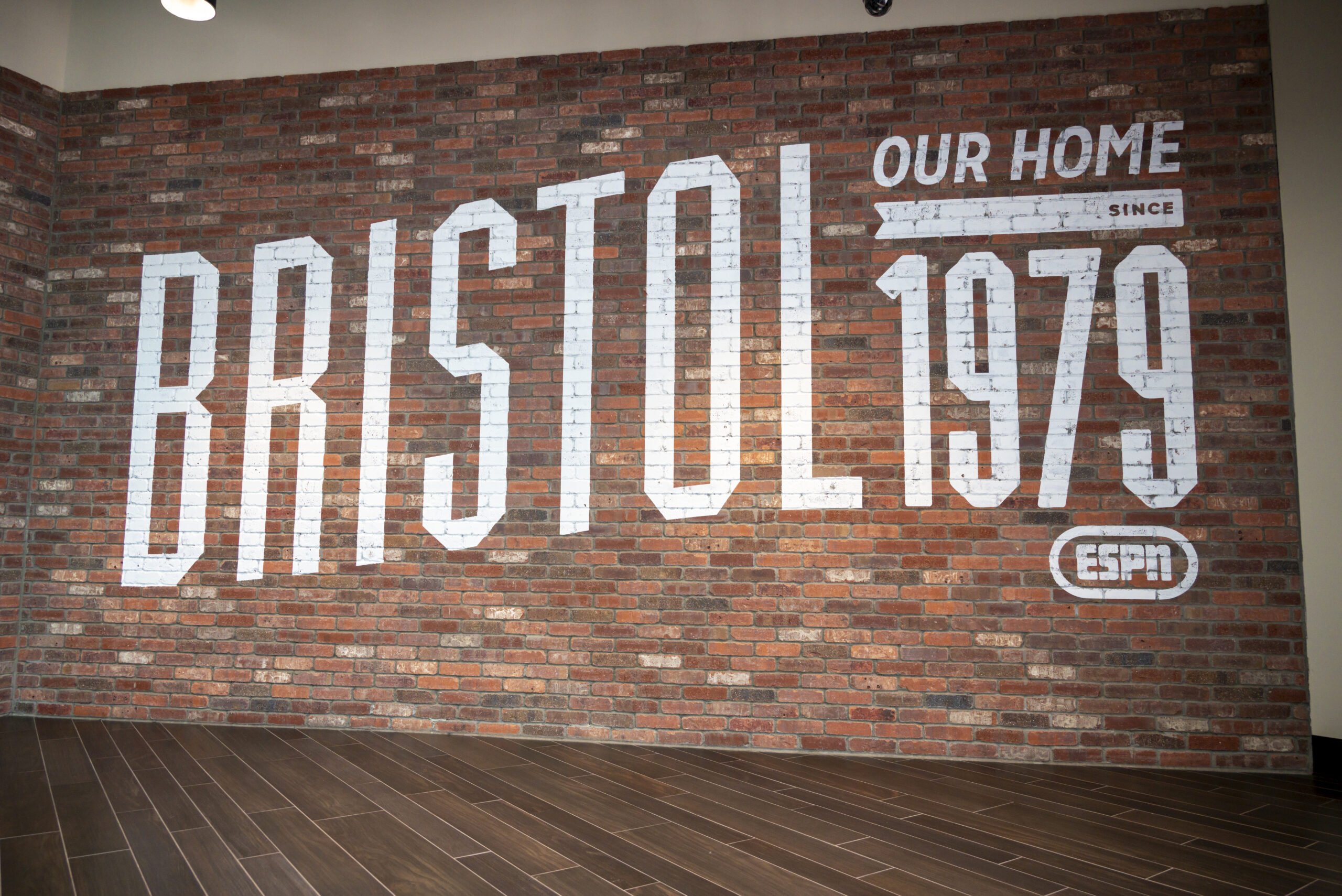
A New Sound on ESPN Radio
The top right corner of the wall has the ESPN Radio lineup listed for reference, which was revamped last fall featuring a blend of established and new radio hosts. While the network opted to alter its complete programming slate, the move was necessitated by company layoffs and a deeper radio partnership with Good Karma Brands.
Morning radio co-hosts Keyshawn Johnson and Max Kellerman were affected by these layoffs, while co-host Jay Williams re-signed with the outlet but moved away from the weekday radio lineup. Evan Cohen, Michelle Smallmon and Chris Canty were installed into mornings, hosting the new simulcast program, UnSportsmanLike, commencing a new era for ESPN Radio and its affiliates.
Megan Judge, senior director of marketing and events for ESPN’s audio portfolio, explained that the hosts of the show have immense talent but are still becoming familiar to a national audience. As a result, the company has adopted a personality-driven approach to promote their content to consumers to help showcase the program. Judge is ultimately focused on demonstrating the value of being an ESPN Radio affiliate by leveraging their properties and personalities to help drive ratings and revenue growth.
“With UnSportsmanLike, we have the ingredients to bake an incredible cake,” Judge said. “Chris, Evan and Michelle are true professionals; they’re fantastic at what they do; their chemistry is great.”
Even though the program films at the ESPN South Seaport Studios in New York City while being produced in Bristol, the synergy between the crew is hardly inconspicuous. Show producer Nuno Teixeira is at the studio by 4am and listens to SportsCenter All Night in addition to sound from the night before. Before the start of the show, he brainstorms with his colleagues and amends the rundown that has been compiled from the prior day. The program then begins its four-hour foray with regular communication between the radio and television productions for the program.
As the show reaches its conclusion, associate producer Pat Costello and board operator JoVante Lawrence complete several tasks, including editing audio and uploading clips. Television producer Mark Morales takes the walk from the digital center to the radio facilities to participate in a brief post-show meeting before watching as the hosts record audio promos for the next day. Craig and other executives routinely offer assistance and suggestions for the programs – which also comes through weekly listening sessions with every show – but they ultimately trust their employees to execute the job for which they were hired.
“I do my best not to hover because you have to entrust upon them, but you’re educating across the way by listening, chiming in [and] by offering up feedback on a regular basis,” Craig said. “That’s why I so appreciate the listening sessions that we do for everyone to continue that bond and partnership with each and every person that we have here.”
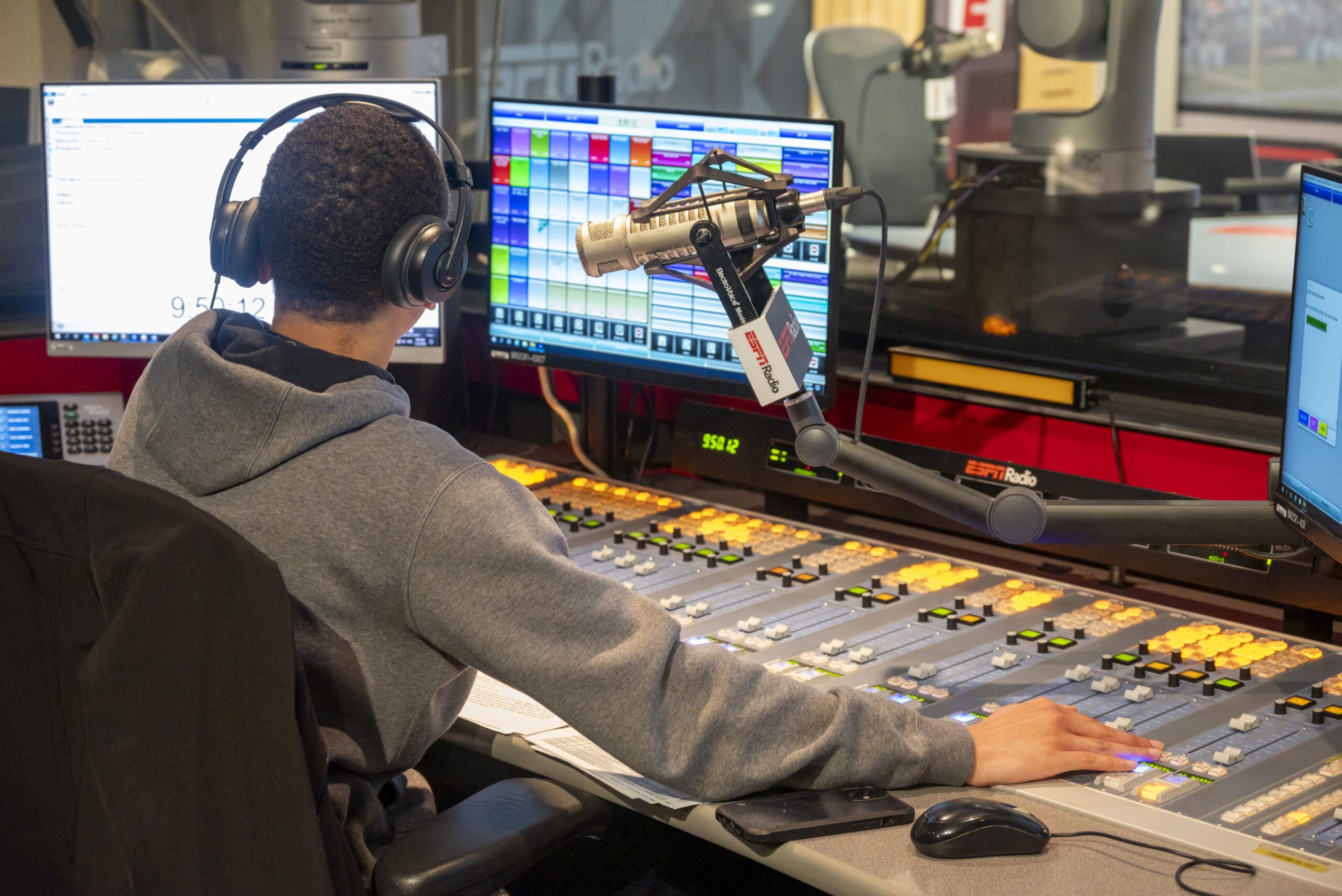
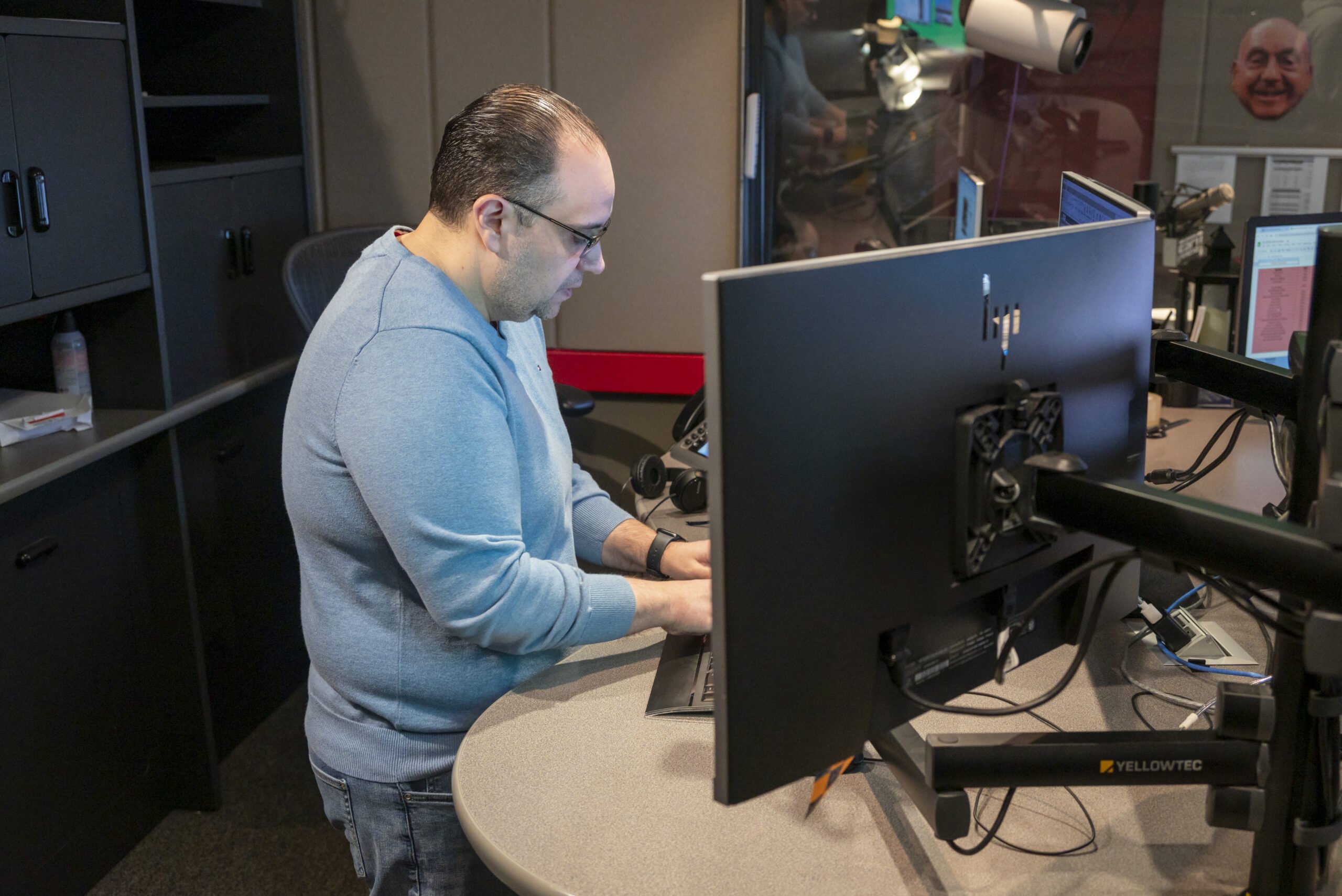
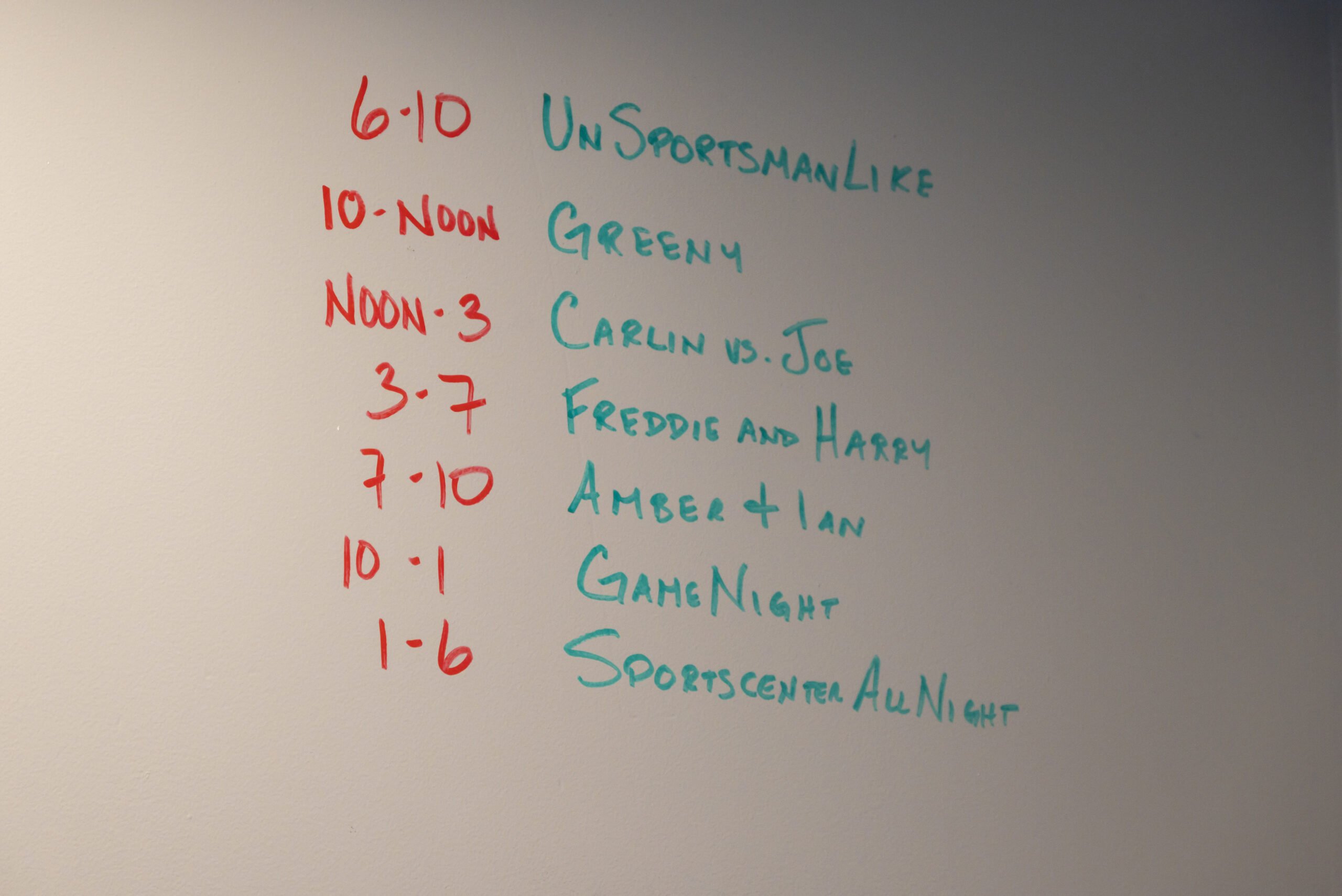
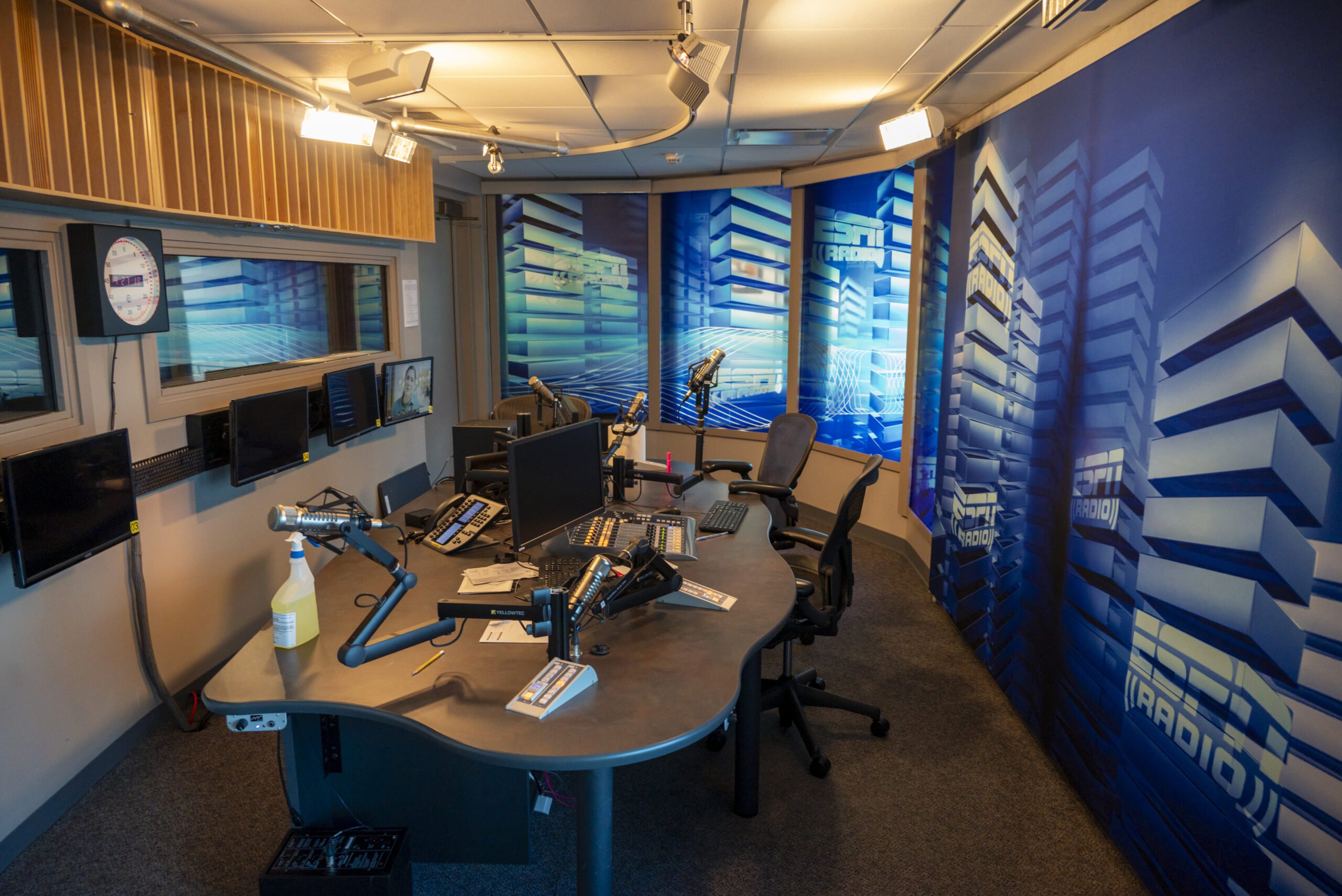
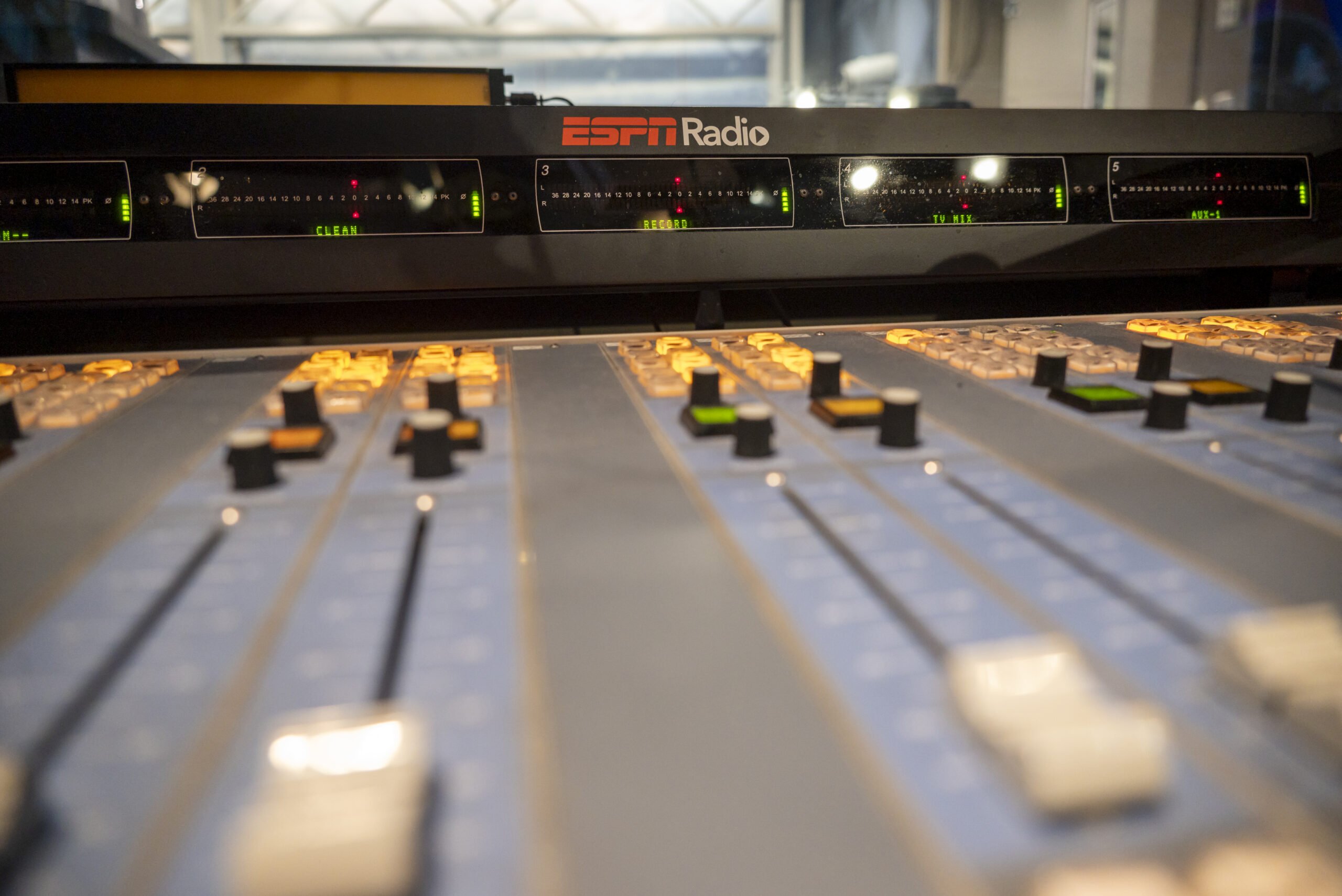
Good Karma Brands and ESPN Radio
Cohen also works for Good Karma Brands as its vice president of content, responsible for interfacing with market managers and content directors to benefit fans, partners and teammates. The media conglomerate owns several ESPN-affiliated stations in cities such as Chicago, Milwaukee and West Palm Beach, possessing control over operations and content. The company also operates ESPN New York 98.7 under a local marketing agreement (LMA) and handles marketing and sales, responsibilities for which Cohen is not directly responsible. The New York and Los Angeles-based ESPN Radio affiliates continue to manage their own content after each lost its program directors – Ryan Hurley and Amanda Brown, respectively – during the aforementioned company layoffs.
ESPN New York is set to depart its 98.7 FM frequency that it has been leasing from Emmis Communications since 2012, a decision made by Good Karma Brands that will end the LMA. Data compiled by Good Karma Brands demonstrates that 60% of ESPN New York listenership occurs outside of terrestrial radio.
Although ESPN New York recently lost the New York Jets to Q104.3 and iHeartMedia, it has retained the MSG Radio Network consisting of the New York Knicks and New York Rangers, focusing on digital distribution enabled through its last media rights extension. At the same time, the station’s programming will remain available on the 1050 AM frequency owned by Good Karma Brands, a refined proposition those at ESPN are preparing to actualize.
“I feel we’re just going to do the same content and our listeners will find us no matter where we are, but my challenges as a programmer may be different from those of a seller,” said Jonathan Winthrop, manager of audio operations at ESPN New York. “I don’t necessarily have to convince anyone other than the audience where we are. A seller may have to convince their current clients that nothing’s changing [and that] we’re going to do the same robust numbers regardless of where we’re putting our content out.”
Winthrop frequently meets with Craig to discuss the content and strategy, along with relaying information from Good Karma Brands. Additionally, he and Greg Bergman, manager of audio operations for ESPN LA 710, speak several times a week pertaining to the trajectory of the outlet. Bergman shared that he had constructive one-on-one meetings to help talent improve and expressed that the station is in its best place in years with everyone pulling in the same direction.
Last summer, Good Karma Brands assumed responsibility over operations and sales for ESPN Radio and the company’s podcast entities. Shortly thereafter, Good Karma Brands founder and chief executive officer Craig Karmazin and president Steve Politziner traveled to Bristol to meet ESPN staff. After the typical introductions and pleasantries, Karmazin asked a question and received a straightforward response from a member of ESPN that was largely expected.
“Craig just kind of paused and he said, ‘Is that a real no or is that an assumed no?,’” Judge recalled. “It’s a simple question, but it sort of put me back on my heels that I think with where audio falls in the priority list for ESPN and the day-to-day of being part of a really, really, really big organization, I think we had gotten into the habit of taking assumed no’s or sometimes not even asking the questions internally about, ‘Could we do this?,’ or, ‘What if we tried to make this happen?’”
Since partnering with Good Karma Brands, Judge has detected both a new energy and new sense of possibility within the building. While outside critics have argued previously that ESPN Radio was losing some of its luster, internal operations carried optimism and excitement surrounding the expansion of a decades-long business venture. Craig believes that the entity is consistently evolving and possesses cognizance over the importance of consumer accessibility.
“Find me a location that is exactly the same now as it was back then, and I’ll find you a product that’s having challenges,” Craig said. “I’m thrilled with the direction that we’re headed.”

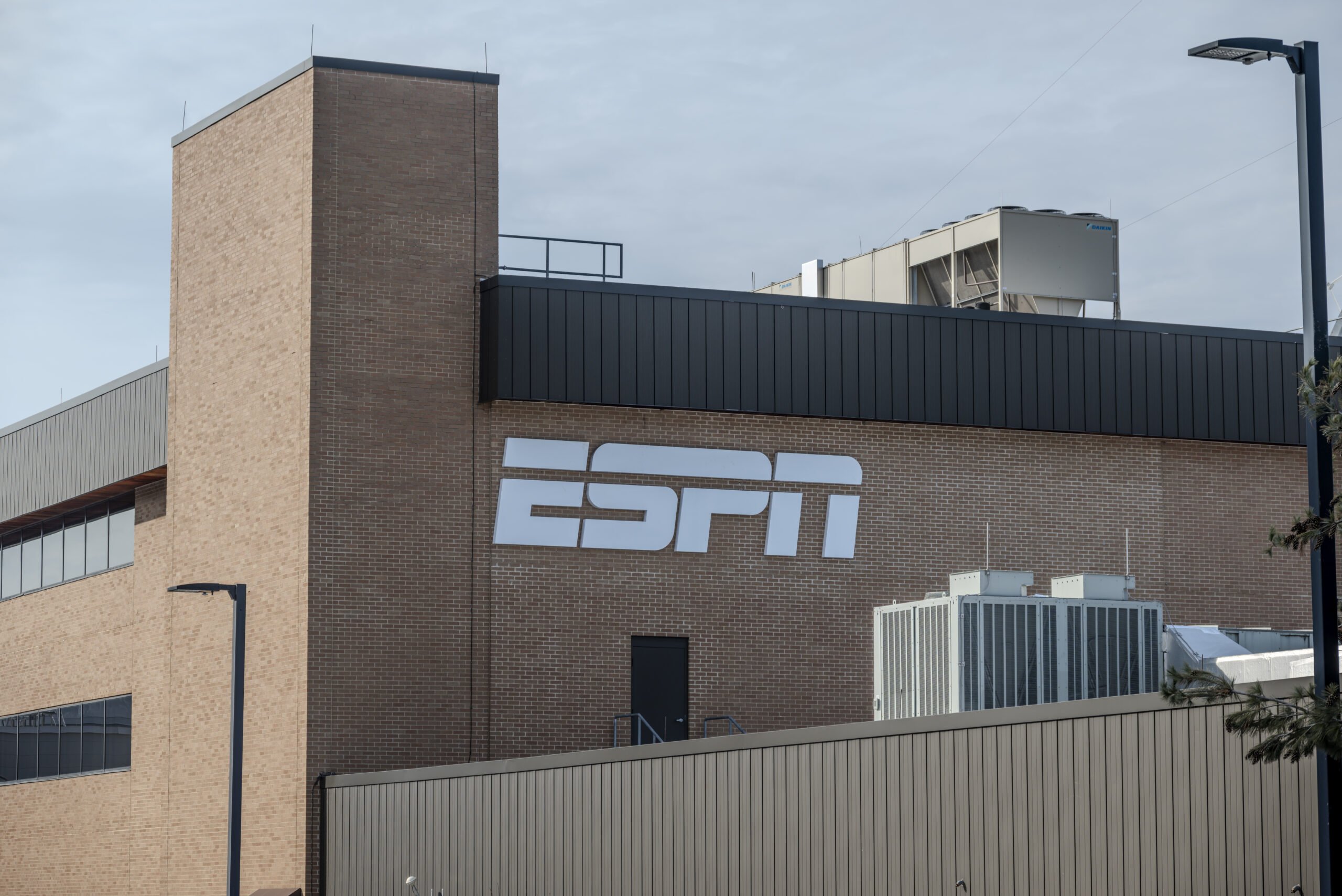
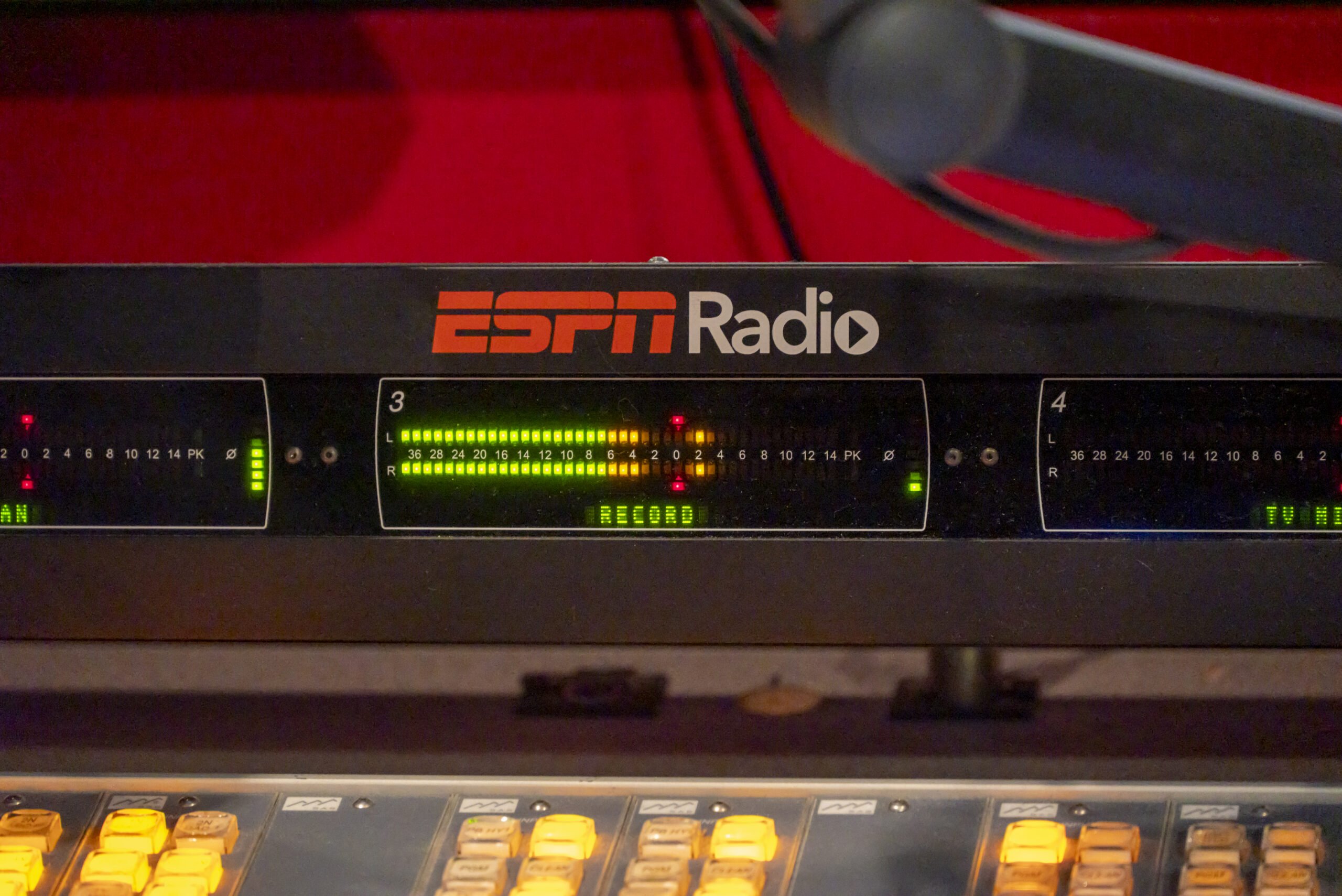

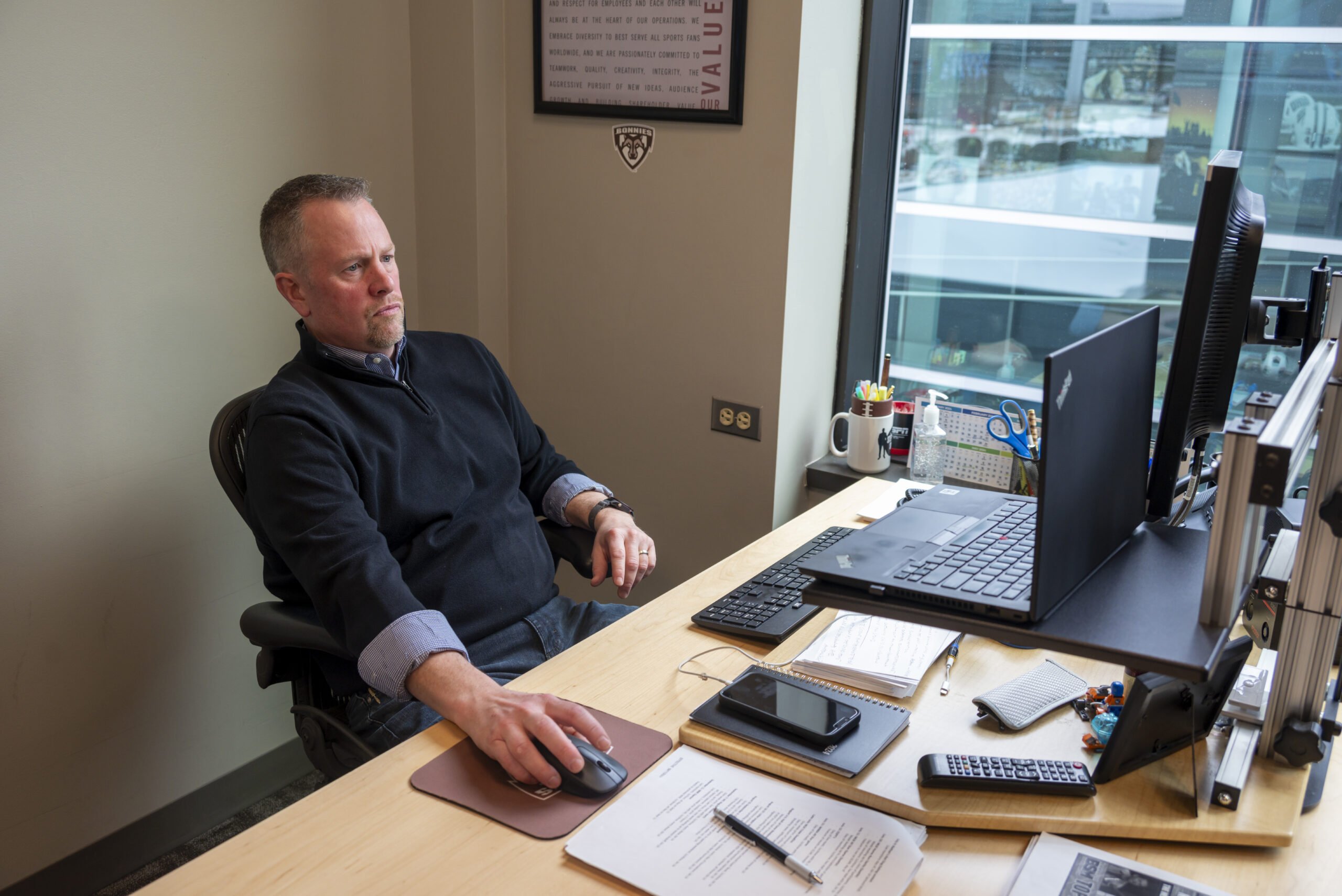
The Daily Grind at ESPN Radio
The broadcast of UnSportsmanLike coincides with the national morning television program, Get Up!, hosted by Mike Greenberg emanating from New York City. Greenberg’s setup, however, is somewhat unconventional in that he immediately makes the transition from television to radio within one minute. Because of this expeditious turnaround, he communicates with producer Brendan ‘Bubba’ Peregrin throughout Get Up! to prepare for his radio program. Furthermore, program co-host Paul ‘Hembo’ Hembekides diligently monitors the news cycle from Seaport and safeguards against overlooking key developments.
“[Greenberg has] been doing this longer than anybody, so the challenge was figuring out how to get everything switched over at Seaport in that minute SportsCenter and show open, but a lot of the topics are the same,” said Liam Chapman, program director for weekday shows at ESPN Radio. “If it works on Get Up!, it will work on radio.”
Chapman has worked at ESPN for over two decades, during which he has produced Mike & Mike and overseen programs such as Bart & Hahn and The Dan Le Batard Show with Stugotz. Today, he is responsible for network scheduling along with #Greeny, Carlin vs. Joe and Freddie and Harry. ESPN Radio does not receive PPM ratings until several months after a ratings book, but even so, he emphasized how the sample size is not ideal for the amount of people who have the meter. As a result, a lot of the evaluation of his program relies on other qualitative metrics that implement his avidity and ear for radio.
“We all learned from Bruce Gilbert about the personalities to bring in, so for me it’s basically, ‘How do I feel? How do the hosts feel? How does Justin and the rest of the management team feel and how does the production team feel?,’ and I think this is the best we’ve felt about a full lineup in a good number of years.”
Before the start of Carlin vs. Joe, Chapman takes part in a pre-show meeting with the hosts and producers of the program. Throughout the half-hour discussion, there are several ideas brought forth for consideration, including creating a list of what producer Evan Wilner would do for $600, inspired by former late-night host David Letterman.
About 20 minutes before the show, everyone checks the rundown and makes the necessary adjustments to the lineup. Of course, that does not predicate any potential news, something Wilner emphasized to his colleagues in the early days of the program. Being situated within ESPN on its Bristol campus has advantages in this regard that facilitates adapting to real-time developments.
“We might only have four minutes in a break, but we will figure out exactly how to re-route the entire plan if need be,” Fortenbaugh said. “It’s a very fluid show.”
Fortenbaugh is largely working from Bristol where he also appears on various television programs such as ESPN BET Live, First Take and SportsCenter. Conversely, Carlin hosts the program remotely, a pattern that continues down the rest of the lineup. All of the hosts outside of a typical studio setup, which includes both Amber Wilson and Ian Fitzsimmons on the evening program, have the necessary technology to work effectively.
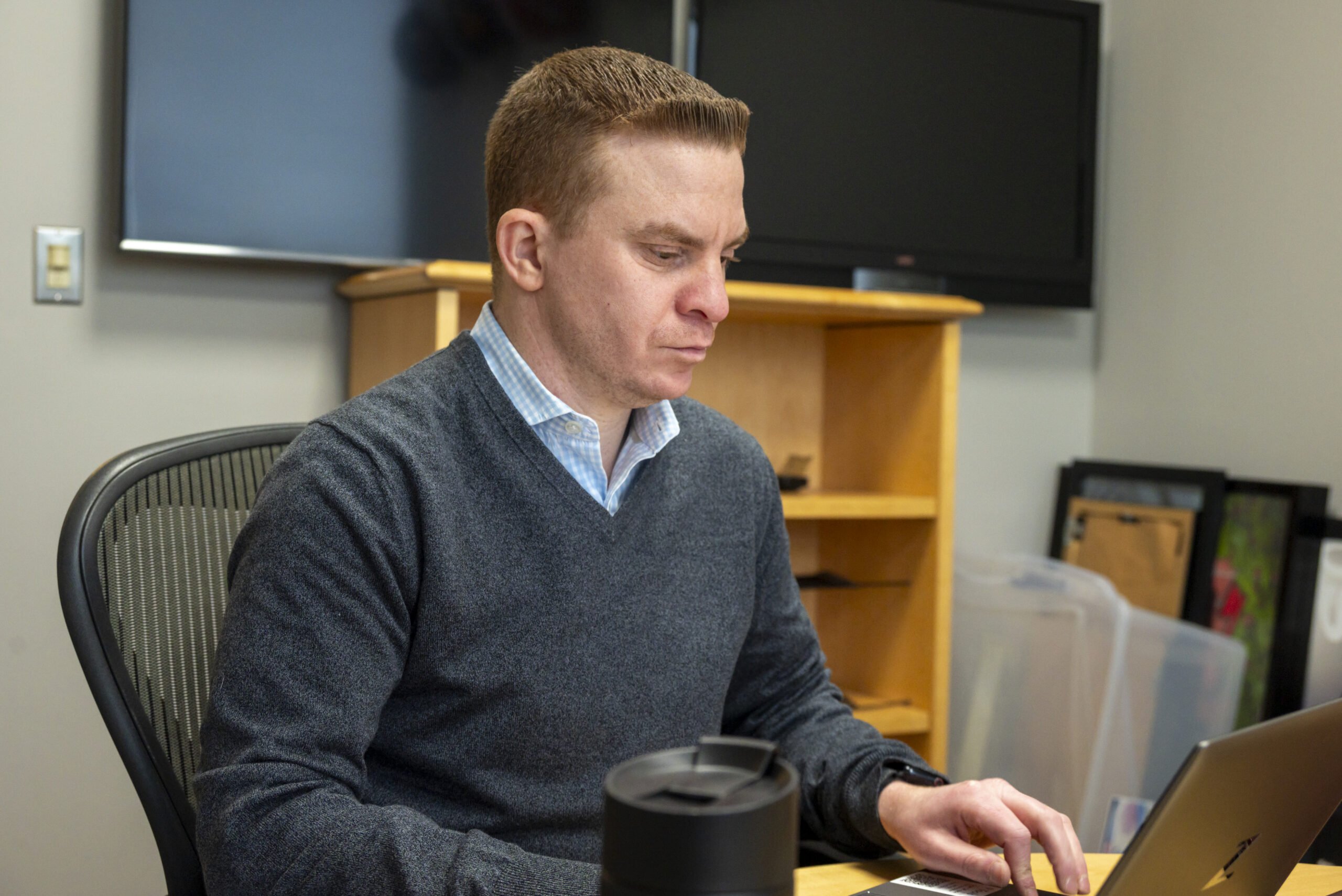
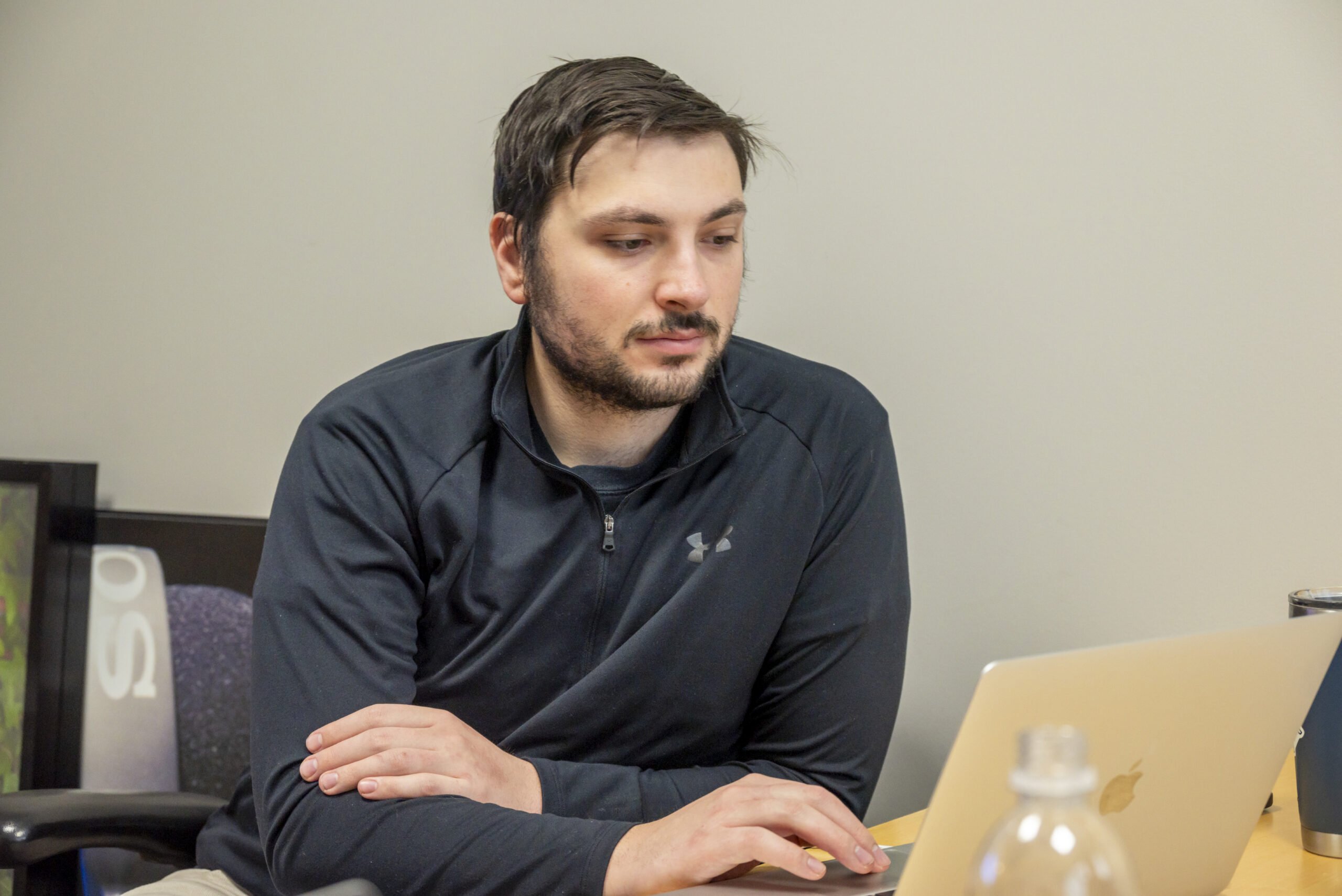
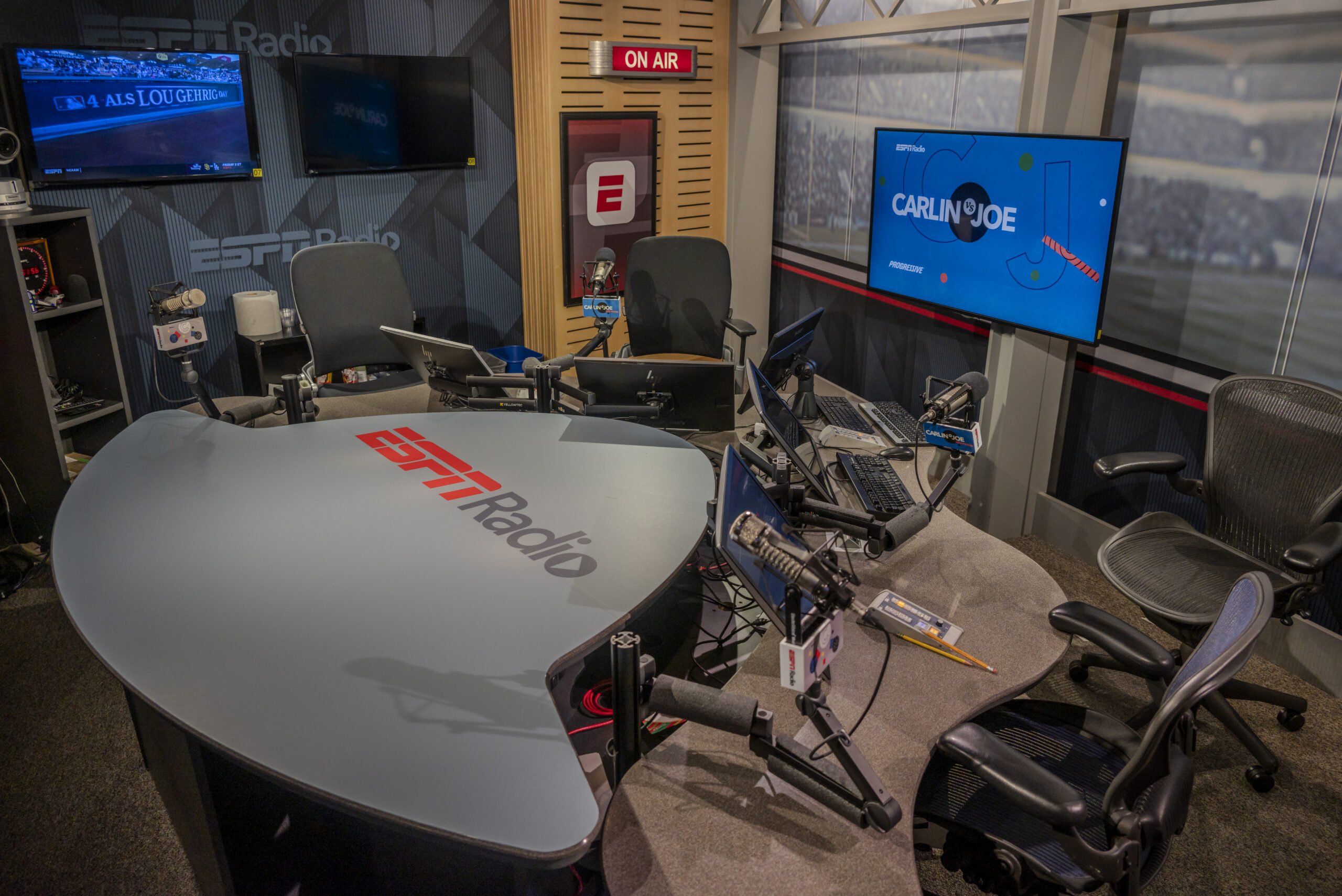
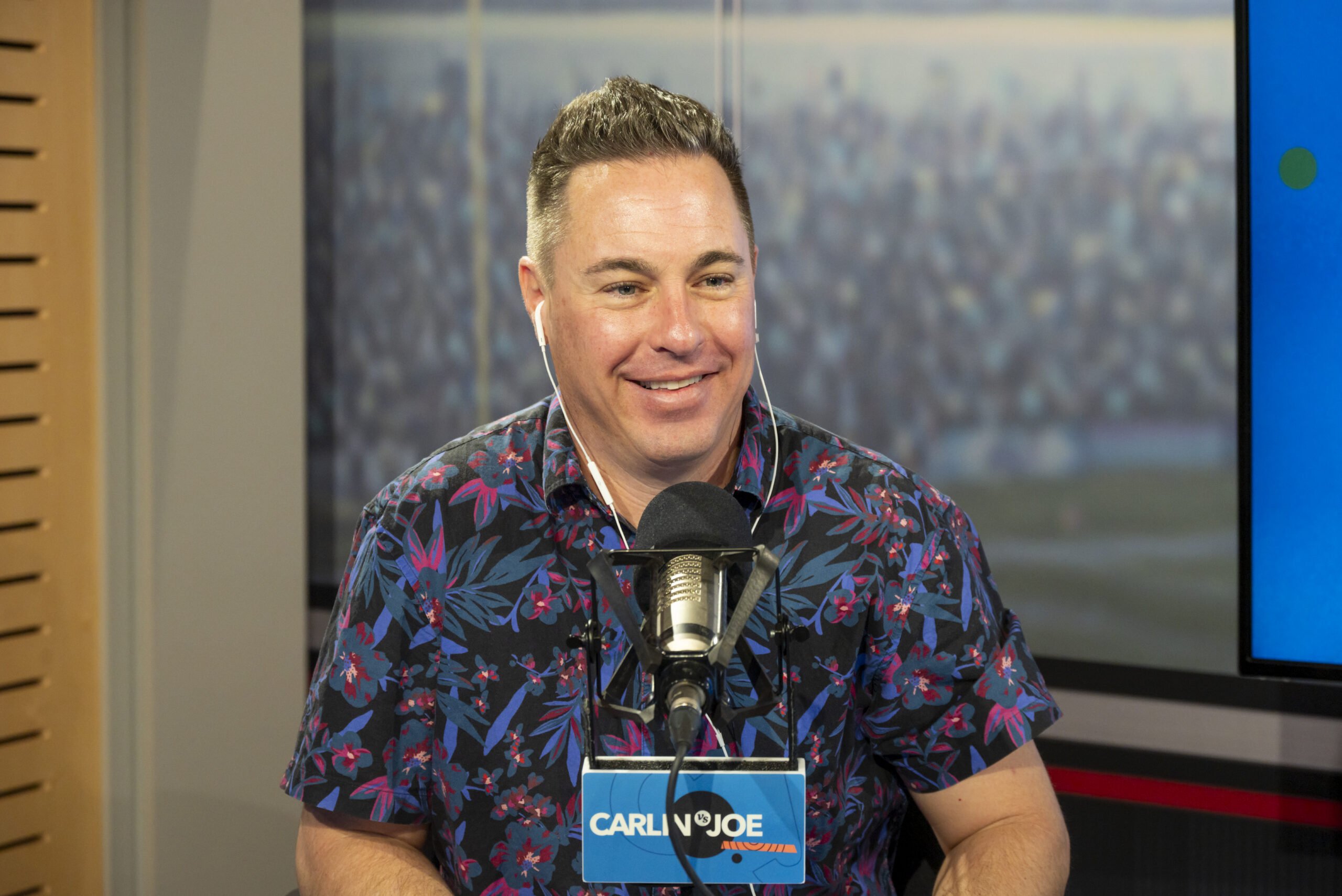

Remote Events, Studio Operations and Production
Outside of its talk programming, ESPN Radio broadcasts approximately 270 live play-by-play events annually, such as out-of-market NFL games, MLB postseason play and several NBA matchups among other properties. With the sheer volume of obligations in this department, Pete Ciccone is working several months ahead of time to make sure things are set and always maintaining a broad perspective. As the program director of remote events, he schedules update anchors and monitors station operations while ensuring fans are properly informed so they can intuitively find the game.
“Not every sport is the same in terms of distribution,” Ciccone said. “Most of them, thankfully, are on hundreds of affiliates as well as SiriusXM and our ESPN app, but it’s not one size fits all.”
Tim Thomas is involved in shaping the network’s messaging in his role as production director. Throughout the day, he is fielding requests from ESPN Radio properties and creating show opens, rejoins and general station imaging. Cayman Kelly is the primary station voice and someone who Thomas works closely with. No piece of production usually exceeds a 30-second duration, something Thomas attributes to dwindling attention spans.
There is clear cohesion and collaboration taking place daily across departments to create informative and entertaining content. Most of the talent pre-pandemic were Bristol-based and in studio for interviews and appearances, a point to which Chapman believes the network has returned. Despite Harry Douglas hosting his afternoon radio program remotely, the technology in the studios minimized latency and permitted real-time interaction with on-site co-host Freddie Coleman.
Coleman welcomed ESPN betting analyst Erin Dolan to the Freddie and Harry show for an in-person interview, taking place shortly after she finished filming ESPN BET Live. Since the show has taken the air, Dolan, along with many other ESPN personalities, have been situated in the radio studios for guest spots and provide unique insights and perspectives on sports news. Show producer Shannon Penn has an outline of Dolan’s segment loaded into AP ENPS, which allows Coleman to reference it in real time and keep things on schedule.
“Even though Harry wasn’t there, the chemistry between Erin and Freddie was so good and the chemistry between Freddie and Harry is so good that it just makes for a better interview,” Chapman said. “All the interviews in studio just are better, and I think it’s because of the face-to-face.”
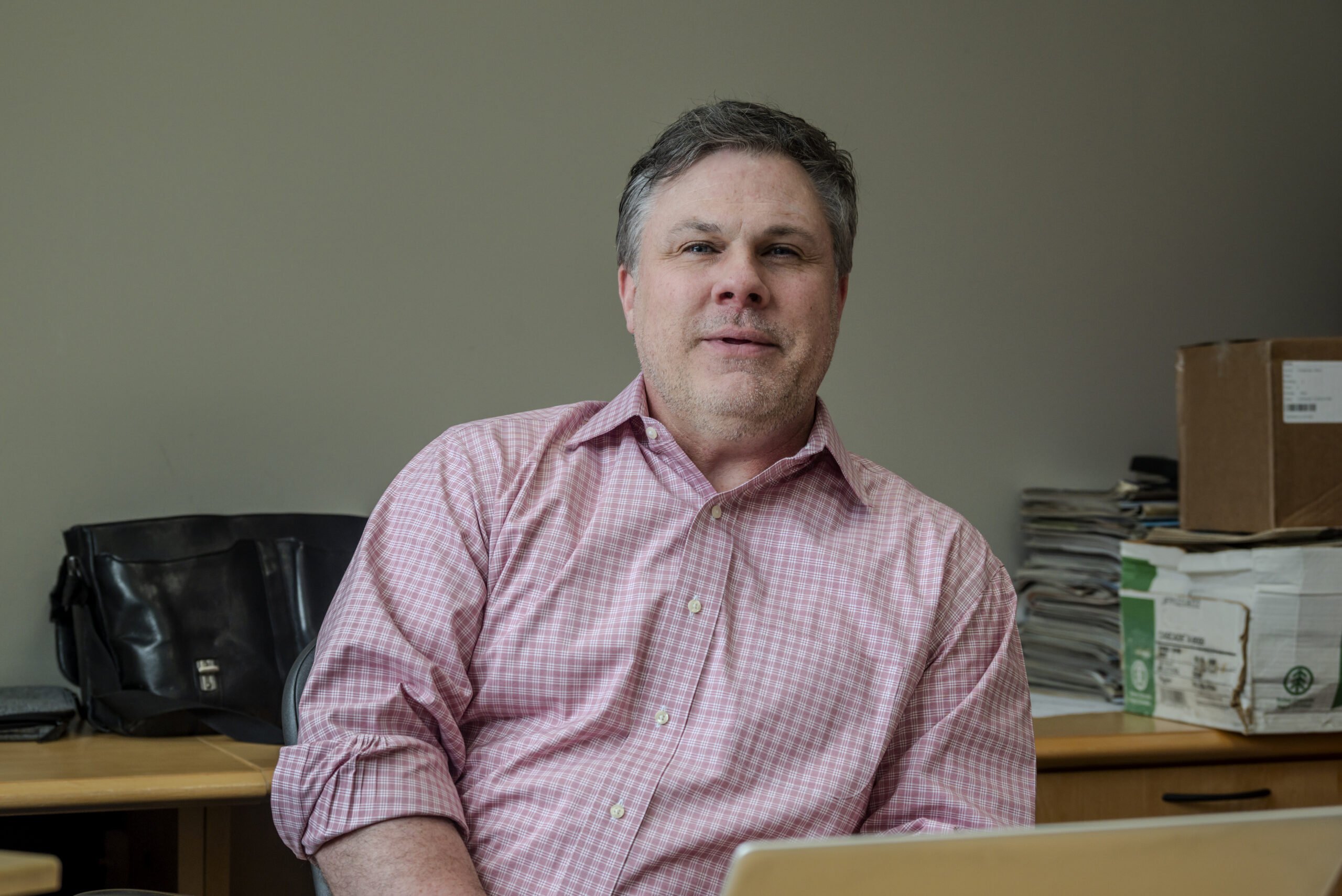
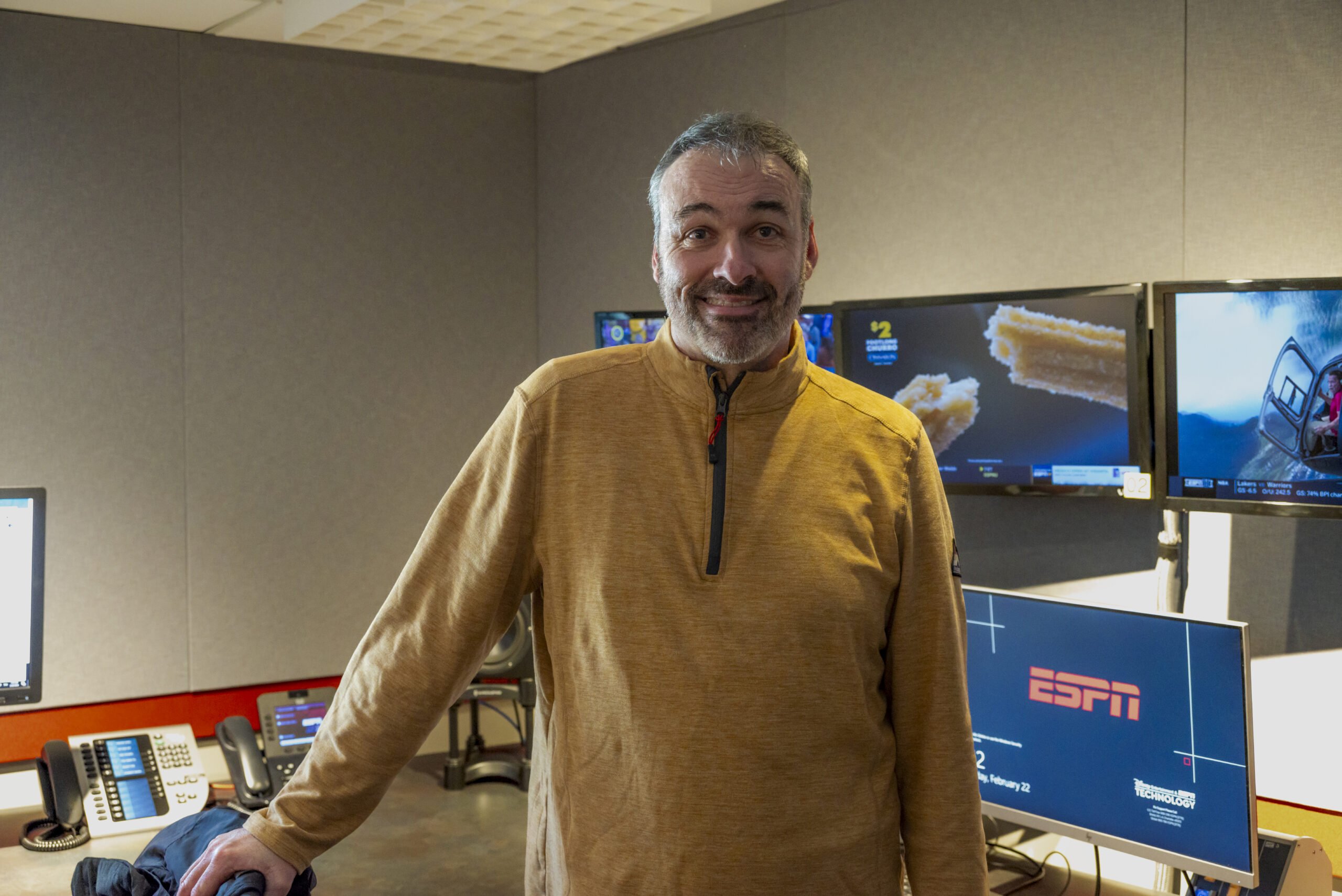
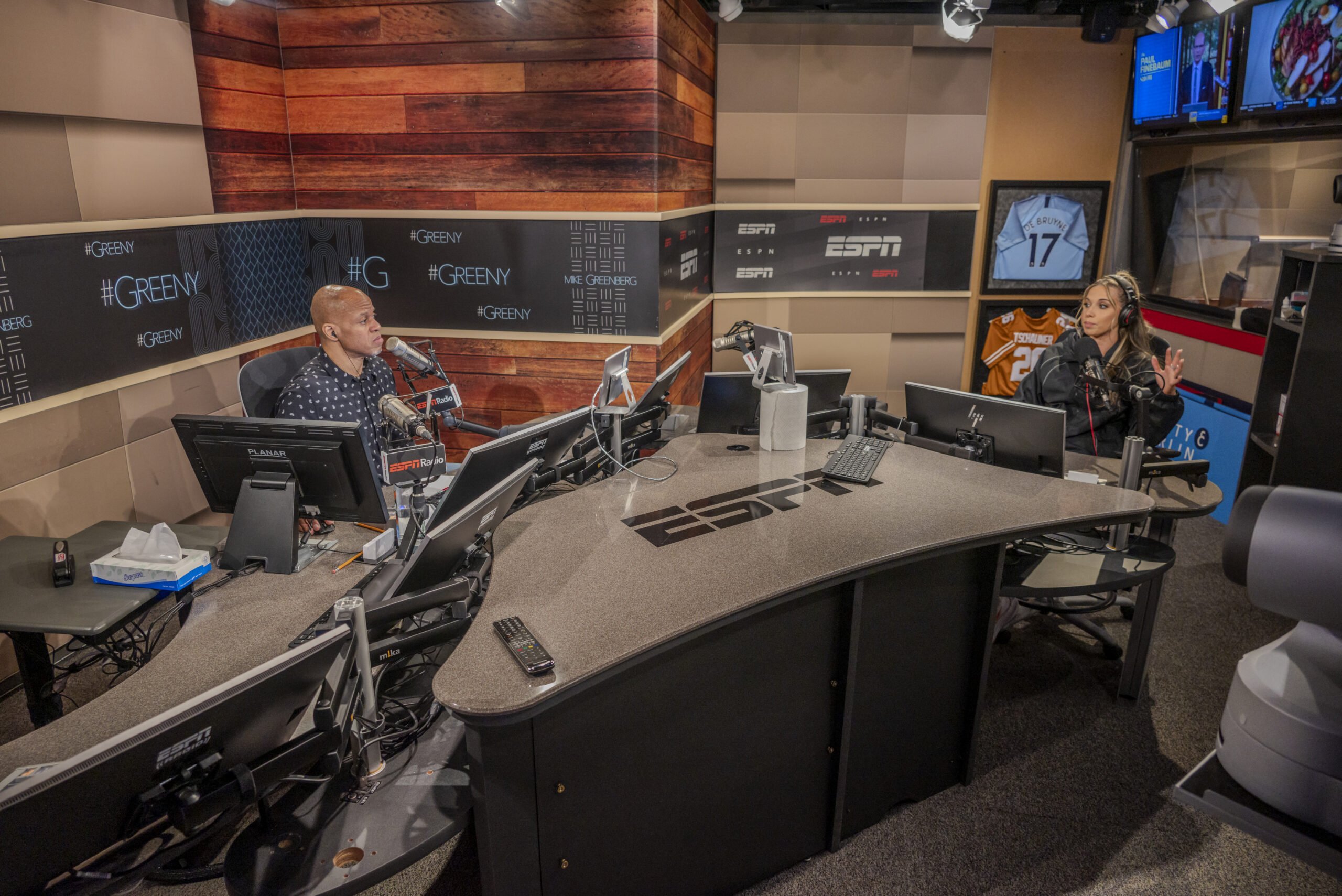
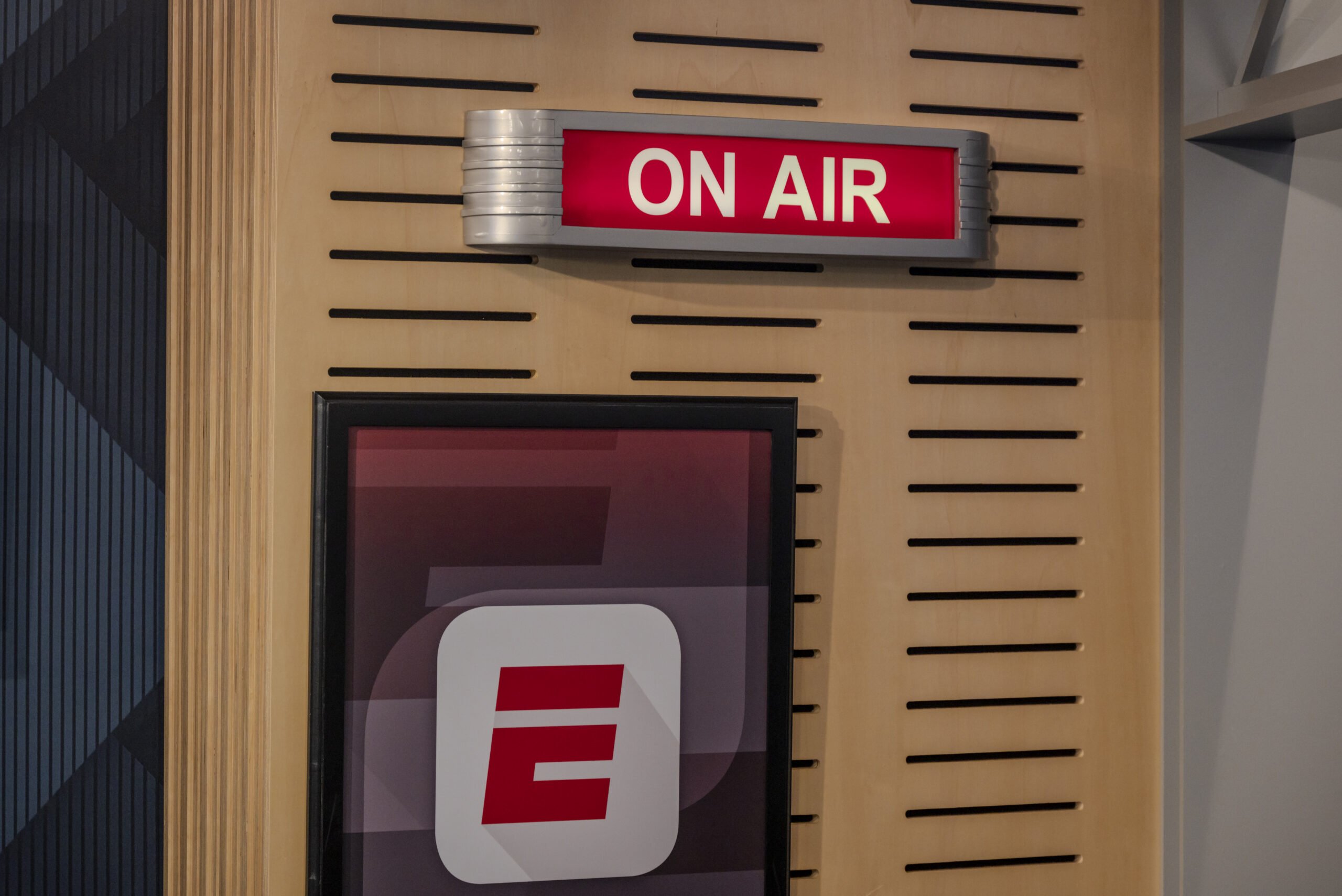
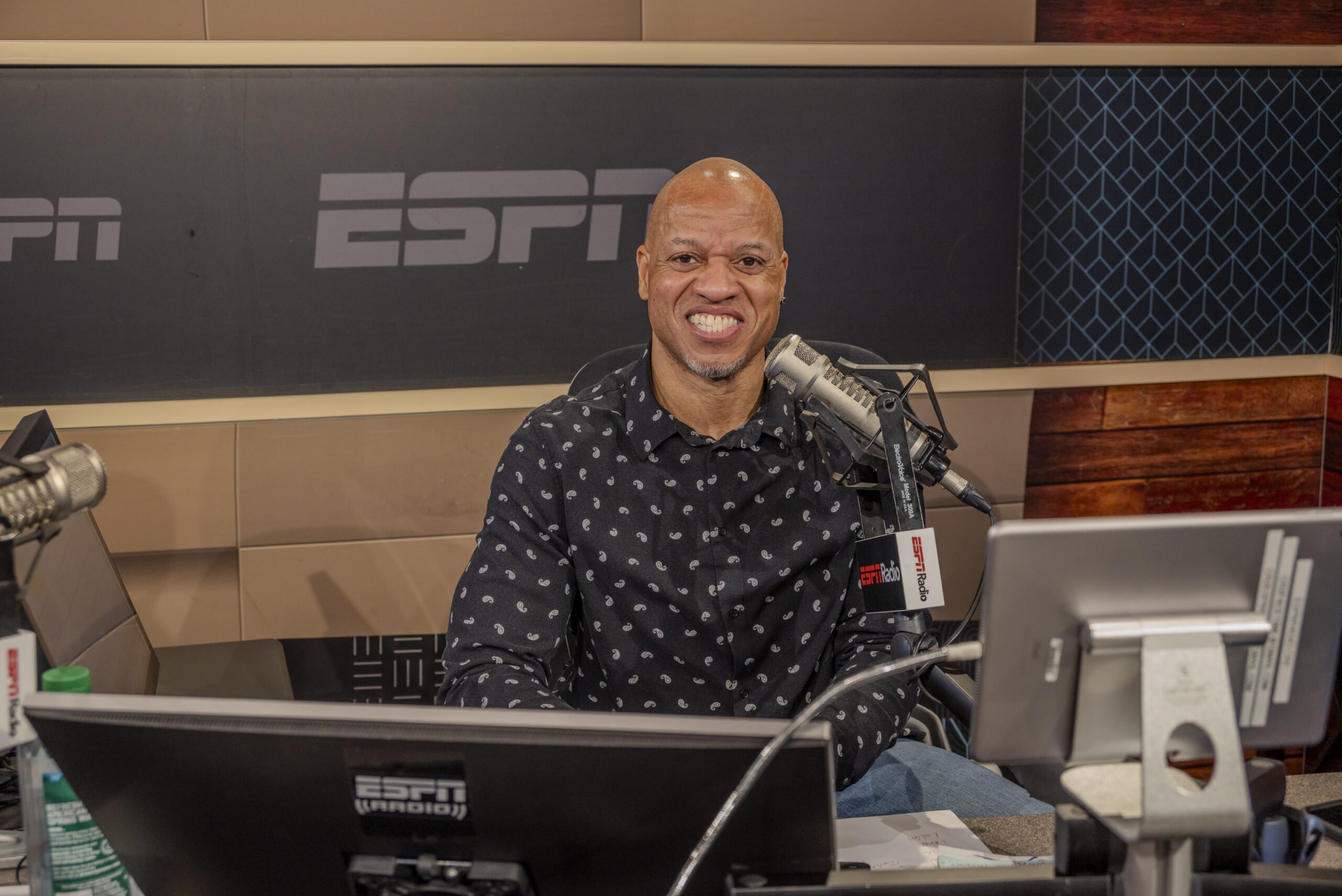
Weeknights and Weekends on ESPN Radio
The studios are situated in a central location on campus that provides ease of access to other areas around the network. Furthermore, there is updated technology and streaming functionality both for audio and video, positioning each for success.
The people within these studios, however, represent the engine that keeps the train moving forward at all hours of the day to provide over 9,000 hours of talk and event content every year. With affiliates around the country in most of the top marketplaces, it is imperative that the network recognizes the time difference and broadly appeals to the target audience. Continuing its content flow for weeknight shows – Amber & Ian, GameNight and SportsCenter All Night is Mike Urrunaga – who works hours outside of the standard 9 to 5.
Urrunaga frequently attends meetings in the late-morning before arriving on campus in the afternoon to meet with producers and monitor new developments. In addition to the fans, the weeknight programs are integral resources for the morning shows to utilize as they prepare to take the air at dawn.
“We’re very much trying to generate, ‘Okay, here are some topics that you would want to talk about that you can talk about,’” Urrunaga said. “We look at the rundowns that they have setup in the afternoon to be like, ‘Okay, is there something that they are looking at that we can add to depending on what’s going on in the evening?’”
Stosh Cienki, who is the program director of weekend shows for ESPN Radio, works to deepen listener relationships and progress conversations that took place during the weekdays. His work week begins on Wednesday and runs through late Sunday night. His responsibilities include listening sessions, scheduling, planning future events and of course, meetings. Along with his weekend duties, Cienki serves as a mentor to his colleagues, offering advice to streamline their development and processes.
“A lot of the producers we have here are young,” Cienki said. “As someone who’s been here as long as I have and having gone through many different shows, that’s an area where I probably have the biggest impact – just trying to develop guys who have only been here a year or two and show them the right way to prep and get ready for these things.”
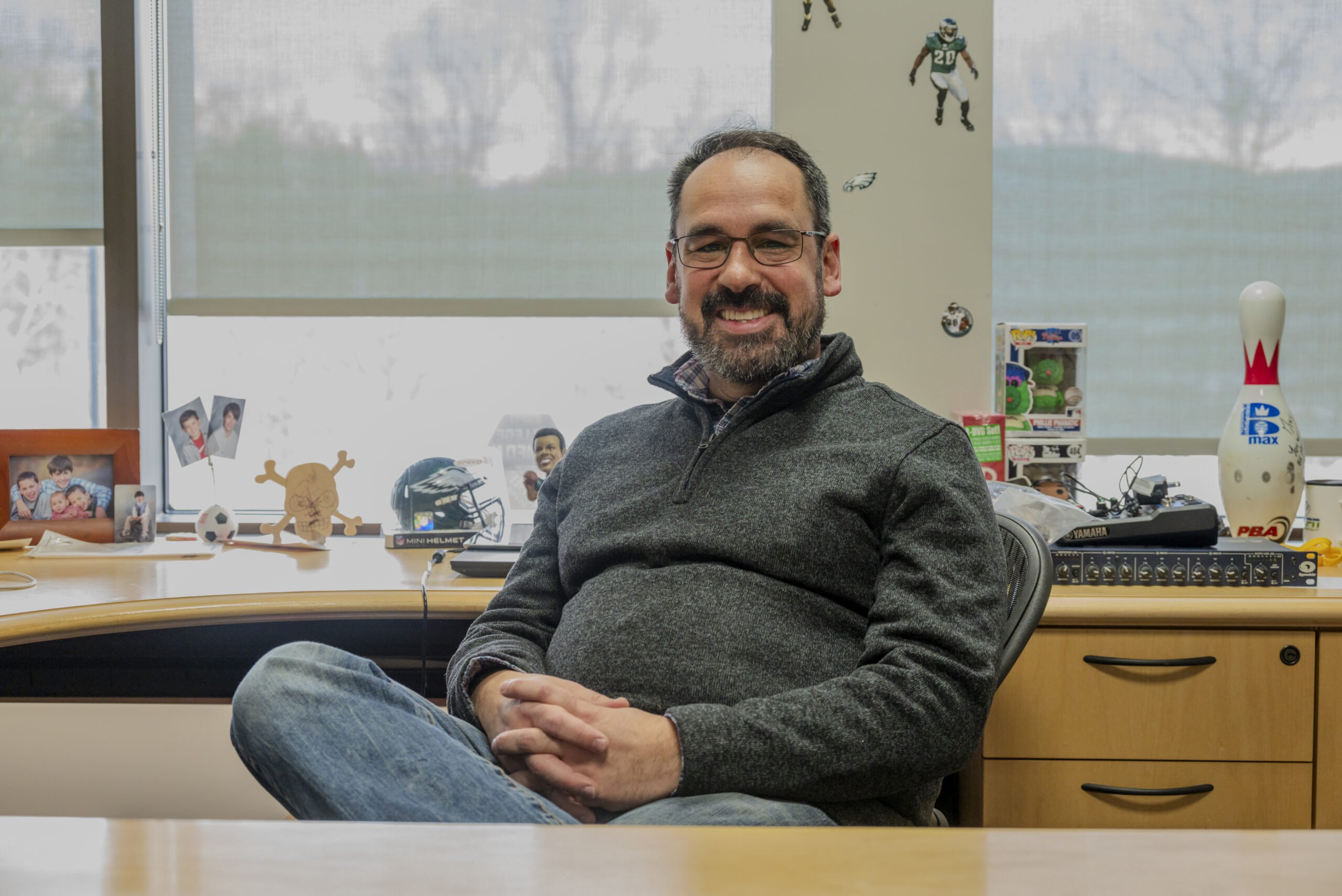


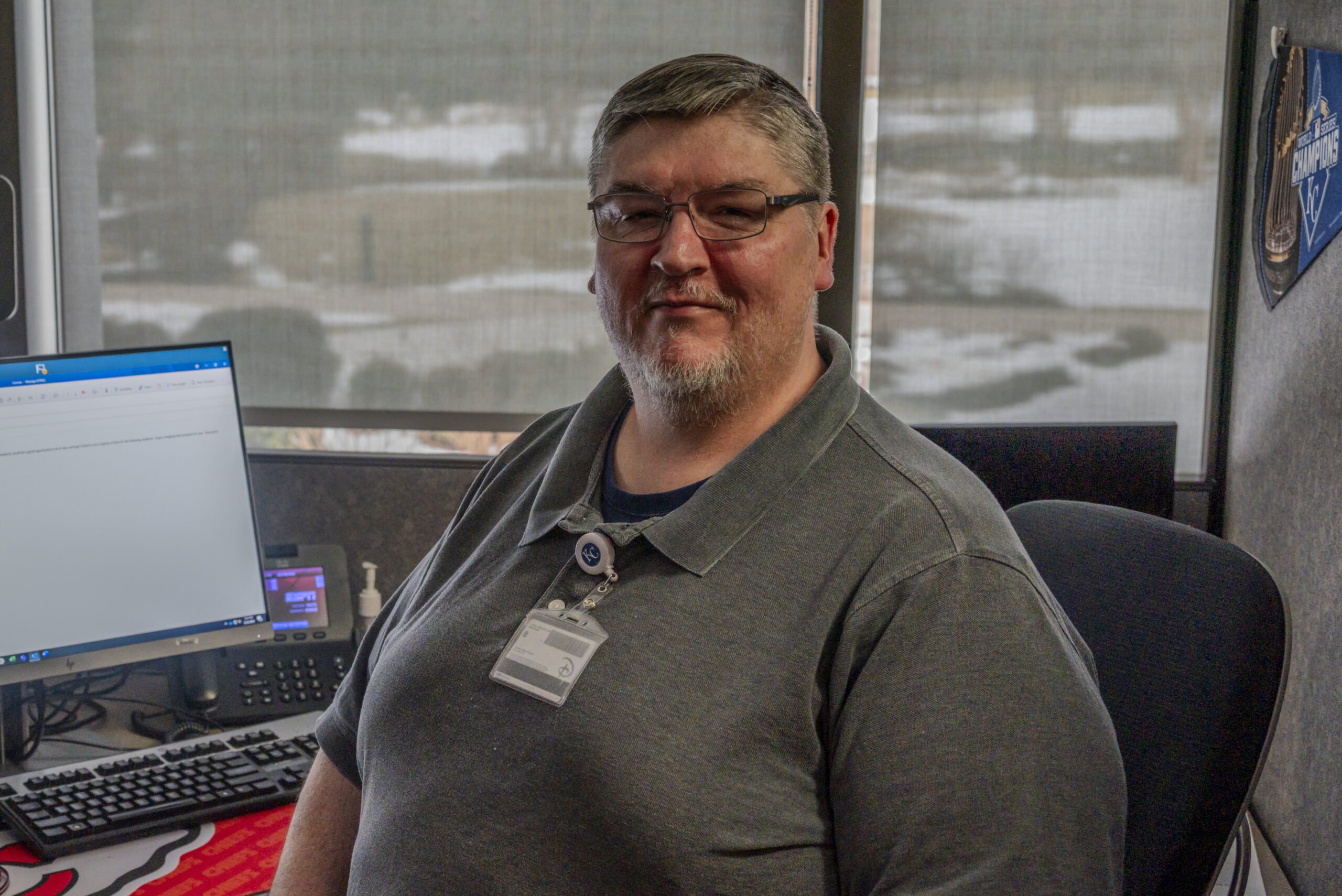
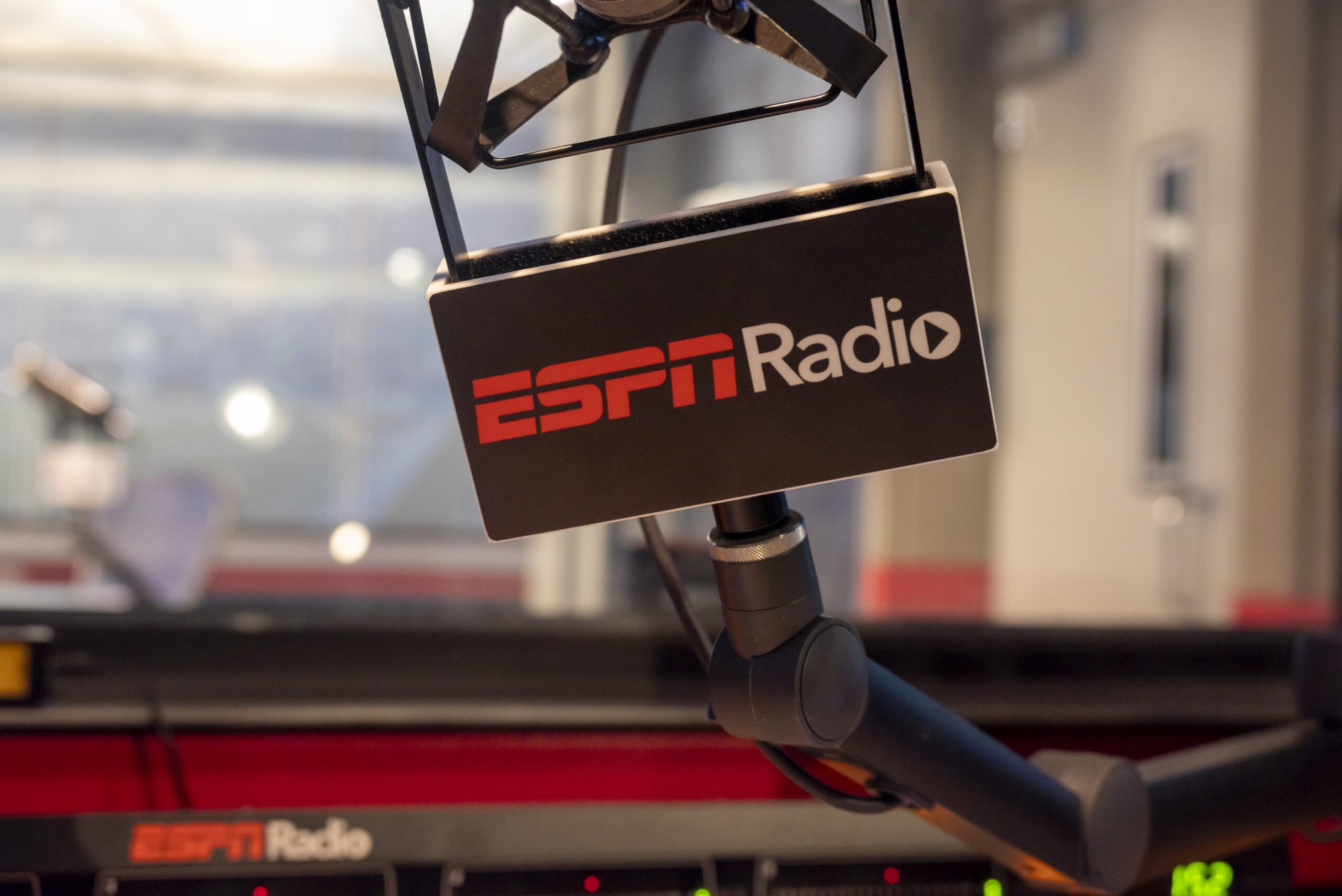
Serving Sports Fans. Anytime. Anywhere.
At the end of the day, several ESPN Radio staffers drive across the street to a full-size gym owned by the network to participate in a company-wide volleyball league. The intramural offering is one of several during the year and something Craig found out ahead of last season. Having played volleyball in the past and being recruited by his colleagues, he decided to participate and has subsequently demonstrated his skills on the court. Stepping away from the speakers and connecting outside of the building ultimately fosters friendships and builds rapport, intangible features of the new lineup those at ESPN Radio hopes it is emitting to consumers.
“It’s cool because you want to have those outside-of-the-office activities that allow that camaraderie,” Craig said. “Talk about a culture – that’s where your culture is created.”
While the management team of ESPN Radio has a wide array of responsibilities, everything ultimately centers back to what Craig has prominently displayed in his office. In order to produce successful results, there is a harmonious consensus that relevancy, relatability, ratings/revenue and relationships are the means that comprise the whole.
This is put into effect through a strong workplace culture that promotes friendships, teamwork and a sense of belonging combined with discernible passion for the craft. Those involved in the ESPN Radio operation genuinely enjoy their occupation and look forward to connecting with listeners by remaining dedicated to the the company’s overarching objective, “Serving sports fans. Anytime. Anywhere.”
“Many hosts have said it over the years – this is the toy store of life – and I consider it the universal language,” Craig said. “Everybody speaks sports in some capacity, but it’s the relatability aspect that gets them to stick around and want to do more, but you have to create that culture within the building and have strong leaders in it that are willing to help everybody grow and succeed.”
Derek Futterman is an associate editor and sports media reporter for Barrett Media. Additionally, he has worked in a broad array of roles in multimedia production – including on live game broadcasts and audiovisual platforms – and in digital content development and management. He previously interned for Paramount within Showtime Networks, wrote for the Long Island Herald and served as lead sports producer at NY2C. To get in touch, email Derek@BarrettMedia.com or find him on X @derekfutterman.






